The 2022 Audubon Photography Awards: The Top 100 Part 2
Moments of delight and awe abound in this collection of standout bird photography. Scroll through and learn the story behind each shot.
By The Editors Audubon Magazine July 13, 2022
Popular Stories
- The 2022 Audubon Photography Awards: The Top 100
- The 2022 Audubon Photography Awards: Winners and Honorable Mentions
- How to Make Hummingbird Nectar
- When You Should—and Should Not—Rescue Baby Birds
- How to Tell a Raven From a Crow
This year almost 2,500 photographers from across the United States and Canada submitted nearly 10,000 photographs and videos to Audubon’s 13th annual Audubon Photography Awards. Reviewing anonymous image and video files, three panels of expert judges selected eight stunning winners and five honorable mentions. (Spoiler alert: It was a great year for grouse).
We couldn’t stop there, with so many more exceptional shots—and exceptional birds—worth sharing. So, we’ve selected 100 additional photos to feature. Displayed in no particular order, these photos give just a taste of birds’ glorious variety. They also showcase a wide array of techniques used by wildlife photographers, as captured in entertaining and thoughtful “behind the shot” stories that accompany each image.
We hope these photos and anecdotes may inspire you to pick up a camera and capture your own unique avian moments. Be sure to peruse our photography section as you get started, including tips and how-to’s, Audubon’s ethical guidelines for wildlife photography, and gear recommendations. And remember to look out for the announcement of next year’s awards entry period in January 2023. Maybe it could be your shot that makes the cut.
- Green Heron by Michael Fogleman
- Location: Salem Pond Park, Apex, North Carolina
- Camera: Canon EOS R5 with a Canon RF 100-500mm F/4.5-7.1 L IS USM lens; 1/500 second at f/7.1; ISO 1000
- Behind the Shot: After discovering that several pairs of Green Herons were nesting at a pond just a mile from my home, I started checking in on them almost every day during the breeding season. The pond provided excellent opportunities to observe and photograph these birds from a relatively short distance away. On this day, one Green Heron was hunting for food at the pond’s edge. Some individuals are more approachable than others, and this one was relatively tame. As it headed in my direction, I got some nice shots of its stalking pose. Very soon after this photo was taken, it caught a giant frog.
- Sanderling by Marlee Fuller-Morris
- Location: False Cape State Park, Virginia Beach, Virginia
- Camera: Canon EOS 70D with a Canon EF 100-400mm f/4.5-5.6L IS II USM lens; 1/500 second at f/8; ISO 100
- Behind the Shot: The difficult hike to False Cape means there aren’t many people on this stretch of quiet beach, allowing for an abundance of wildlife, including large flocks of wintering sanderlings. On this day, the receding tide had left pools of water in depressions in the sand. The Sanderlings bathed, dipped, splashed, and threw a ton of water into the air. I lay down on the wet sand and slowly crept towards a small flock. I focused on three birds and hoped to get them splashing in sync. Like much of the coast, False Cape is losing land every year to sea-level rise. I’m hopeful that photos of special places like this, and the birds and other wildlife that need them, can inspire urgency to combat this crisis.
- Sandhill Crane by Jayden Preussner
- Location: Vero Beach, Florida
- Camera: Nikon D850 with a NIKKOR 200-400mm f/4G ED VR II lens; 1/2000 second at f/4; ISO 320
- Behind the Shot: My friend and I decided to drink our morning coffee outside by the lake. Soon a family of Sandhill Cranes, which we had been seeing around, arrived. We watched them for about 20 minutes when I decided to take some pictures. The birds were starting to get very comfortable with us, allowing me to get a photo that filled the frame very nicely and made me quite happy. I thought it was amazing to watch the young birds play with each other while the adults cleaned their feathers. To me, it almost seemed like they were tired parents done with their two overly excited youngsters.
- Trumpeter Swans by Eileen de la Cruz
- Location: Skagit Valley, Washington
- Camera: Fujifilm X-T3 with a FUJIFILM XF 100-400mm f/4.5-5.6 R LM OIS WR lens; 1/1000 second at f/5.6; ISO 1000
- Behind the Shot: It was March 2020, just a week before the World Health Organization declared a pandemic. My husband and I were about to leave for Spain, but we canceled our trip and drove to the Skagit Valley instead. Thousands of Trumpeter Swans spend the winter here, feeding in the agricultural fields before they head north in spring. It was a strange and stressful time, but watching the birds was healing. On this cold morning I first heard then spotted the swans overhead. From my vantage point and with my lens, it appeared as if I was at the same level as the birds, high above the clouds and the frosted trees.
- Short-eared Owl by Scott Suriano
- Location: Gettysburg, Pennsylvania
- Camera: Canon EOS-1D X Mark II with a Canon EF 500mm f/4L IS II USM lens and Canon Extender EF 2x III; 1/2000 second at f/8; ISO 640
- Behind the Shot: On a late afternoon in February, I traveled to Gettysburg to photograph Short-eared Owls hunting in one of the historic Civil War battlefields. The previous day’s rain coupled with freezing temperatures had caused ice to crystalize on the tall grasses that blanketed the fields. As the sun lowered on the horizon, these fierce, pint-sized birds of prey roused from their ground roosts and shot up in the air like Roman candles to begin their evening hunting. The angle of the light and icy conditions created a surreal, glowing silver and golden bokeh. Keeping a respectful distance to avoid disrupting their routine, I added a 2x teleconverter to my long fixed prime lens and attempted to capture the fast-paced action of these acrobatic raptors in this glittery, magical landscape.
- American Bittern by Joshua Galicki
- Location: Sullivan County, Pennsylvania
- Camera: Canon EOS R5 with a Canon EF 600mm f/4L IS III USM lens and Canon EF EOS R Mount Adapter and Canon Extender EF 2x III; 1/320 second at f/8; ISO 4000
- Behind the Shot: While standing waist-deep in water, under a blind and during a steady spring rain, I captured this American Bittern portrait. The bird stayed perfectly idle during a lengthy downpour, deep inside a freshwater wetland. While the conditions were dreary, it was incredible to watch this amazing and steadfast species. American Bitterns are endangered in the state of Pennsylvania due to declining habitat and the quality of remaining wetlands. I’ve been trying to document these birds, which can be difficult to see, in the hopes of raising awareness for their preservation.
- Virginia Rail by Thomas McDonald
- Location: Horicon National Wildlife Refuge, Mayville, Wisconsin
- Camera: Nikon D5 with a NIKKOR 500mm f/5.6E PF ED VR lens; 1/2000 second at f/10; ISO 3200
- Behind the Shot: I have spent many summer hours at Horicon National Wildlife Refuge observing and photographing herons, cranes, and waterfowl. Arriving at the marsh early in the morning, I started walking down the floating boardwalk to a spot I have seen Soras and Virginia Rails. Lying down, trying to get the lowest possible position, a Virginia Rail ran across the boardwalk. I turned to where the rail stopped, taking some photos while the bird was foraging and preening in the reeds and cattails. After a few minutes, the rail started to take off toward me, and I captured this shot.
- Northern Flicker by John Welch
- Location: Private Property, New Hampshire
- Camera: Canon EOS 6D with a Tamron SP 150-600mm F/5-6.3 Di VC USD lens; 1/400 second at f/6.3; ISO 1250
- Behind the Shot: At the outset of the pandemic, my family was delighted to discover a pair of Northern Flickers making their home within sight of ours. Early in the nesting cycle, we observed the pair switching off who would stay in the hole, presumably to incubate the eggs. I set up some concealment in the nearby bushes and would shoot through overhanging leaves to create this natural blurred green frame. As the season progressed, we observed both parents making many more return trips to the nest, feeding the chicks who grew bigger each day. They poked their begging bills out of the nest hole. We may have spent more time at home that spring, but we still felt connected to the wider world through this window to the wild.
- Brown Pelican by Irina Pigman
- Location: Saint Petersburg, Florida
- Camera: Sony Alpha a9 with a Sony FE 100-400mm F/4.5-5.6 GM OSS lens and a Zeiss UV filter; 1/640 second at f/6.3; ISO 800
- Behind the Shot: After a trip to Europe last November, I was really jet lagged. I took advantage and got up before sunrise to see birds at my favorite spot on the water. Just as I arrived, I saw a juvenile Brown Pelican fishing. This bird is quite common in Florida, but all of the sudden, the sight of it made me catch my breath. The sun was still pretty low behind the bird, and the rays went straight through the pelican’s throat pouch, making it glow radiantly in the low light. The throat pouch’s capacity to fit three times more fish than its stomach has always fascinated me, but I’ve never seen it as an object of beauty. This pelican’s translucent jowls mesmerized me.
- Downy Woodpecker by Michael Lovejoy
- Location: Parker River National Wildlife Refuge, Newbury, Massachusetts
- Camera: Canon EOS 6D Mark II with a Canon EF 70-300mm f/4-5.6L IS USM lens; 1/320 second at f/5.6; ISO 320
- Behind the Shot: My partner finally got me into birding over the course of the pandemic. She gave me binoculars, but it was a used telephoto lens and the challenge of trying to photograph birds that hooked me. On an early December evening, after visiting family nearby, we explored Plum Island and came upon saltmarsh reeds as tall and dense as I had ever seen. It was an amazing sight unto itself, but then I noticed some movement deep off the trail. I caught a glimpse of a Downy Woodpecker hopping and pecking. My favorite part of birding is that you always come away with at least one standout memory—a moment of experiencing true unfiltered nature. The photo is just a great keepsake and a spark for my burgeoning interest.
- Western Grebe by Scott Suriano
- Location: Loch Raven Reservoir, Baltimore County, Maryland
- Camera: Canon EOS R5 with a Canon EF 500mm f/4L IS III USM lens and Canon Extender EF 2x III; 1/500 second at f/8; ISO 1000
- Behind the Shot: The local birding community was abuzz when an unlikely pair of wintering Western Grebes graced a northern Maryland lake. Hoping to glimpse these rare visitors, I packed my gear and headed out. To my delight, I spotted the celebrity couple right away swimming in the lake’s center. I watched these birds interact and dive for food for about an hour before they split up and began swimming in separate directions. The trees cast warm reflections that stretched into the calm, cold waters. This grebe, gliding effortlessly, sliced through the seemingly ablaze shoreline.
- Trumpeter Swan by Elizabeth Boehm
- Location: Pinedale, Wyoming
- Camera: Canon EOS-1DX Mark II with a Canon 600mm f/4L IS III lens and Canon Extender EF 1.4x III; 1/1000 second at f/5.6; ISO 1000
- Behind the Shot: An hour before sunrise on a misty, calm August morning, I headed out to a privately-owned pond to photograph waterfowl and shorebirds. After carefully walking 200 yards in the dark, my floating blind over my head, I quietly slipped into the water. I had clear skies to the east, promising good light. A resident pair of Trumpeter Swans became curious and moved in close to my blind, unaware of my presence. They preened their feathers as the sun rose, and I captured them as they groomed. I spent several hours photographing a variety of waterbirds and left the pond exhilarated.
- American White Pelican by Candice Head
- Location: Lake Saint Joseph, Newellton, Louisiana
- Camera: Fujifilm X-H1 with a FUJIFILM XF 100-400mm f/4.5-5.6 R LM OIS WR lens and lens UV filter; 1/1600 second at 5.6; ISO setting 800
- Behind the Shot: On a mild December afternoon, I noticed some White Pelicans in the lake near my home. The Mississippi River Delta is known for its abundance of wildlife, particularly migrating birds. White Pelicans have come to the lake before, but never so many at one time. It was a captivating sight. As I watched, I was mesmerized by the image of so many seemingly identical birds swimming in perfect unison. Grabbing my camera and heading closer to the lake, I captured what has become a favorite photo of mine: a shot that embodies both the chaos and peace of a tight-knit community.
- Tree Swallow by Alexander Eisengart
- Location: Margaret Peak Nature Preserve, North Ridgeville, Ohio
- Camera: Sony Alpha a6400 with a Sony E 70-350mm f/4.5-6.3 G OSS lens; 1/640 second at f/6.3; ISO 250
- Behind the Shot: I’m 14 years old, so obviously I can’t drive. On my birthday, my mom took me birding at sunrise. At this time during the summer, smoke from fires throughout the West blew into the eastern United States. This made the sunlight diffuse, giving the sunrise a really cool look. Luckily for me, there were tons of Tree Swallows. They flew around catching insects, and the morning dew looked great on the spider webs.
- Great Blue Heron by Mary Badger
- Location: Davis Arboretum and Public Garden, Davis, California
- Camera: Sony Alpha 7 III with a Sony FE 100-400mm F/4.5-5.6 GM OSS lens; ISO 800
- Behind the Shot: Every day I take my lunch break at the UC Davis Arboretum, where I work as a researcher using genetic tools to study wildlife conservation. I am always amazed how wild the arboretum feels, with waterbirds making their way down the creek, warblers flitting in and out of the trees and bushes, and hawks hunting in the lawns. I started bringing my camera with me during post-lunch walks. One day I saw this magnificent Great Blue Heron sitting in a pine tree overlooking the water. I sat snapping shots and watching people go by, enjoying their looks of wonderment when they saw the heron perched above. This photo reminds me of the hidden beauty and biodiversity of public green spaces.
- Sandhill Crane by William Farnsworth
- Location: Kensington Metropark, Milford, Michigan
- Camera: Nikon D7500 with a NIKKOR 500mm f/4 FL ED VR lens; 1/1000 second at f/4.0; ISO 360
- Behind the Shot: I watched a pair of adult Sandhill Cranes forage for food with their two young colts. The parents encouraged the colts to find their own meal. To my surprise, they were quite successful. Then, one of the parents found a damselfly on the ground. Rather than eating it, the adult grabbed it in its beak and called over one of the colts, who eagerly took the offering. This was a very special moment that I had the pleasure of capturing: a parent expressing love to its offspring. The interaction lasted no more than five seconds, but the moment itself was timeless.
- Blue Jay by Alessandro Retacchi
- Location: Central Park, New York, New York
- Camera: Sony Alpha a9 II with a Sony FE 85mm f/1.8 lens; 1/2500 second at f/4; ISO 1250
- Behind the Shot: On this cold day, I found a female Northern Cardinal on a branch covered with snow. As I was trying to photograph her, I noticed two very vocal Blue Jays. I was able to focus and shoot a burst of photos as they fought, their feathers seeming to glow in the light. I had always hoped to photograph two birds in flight with the faces clearly visible and facing each other. In this case, one Blue Jay has the trademark raised crest in a sign of aggression.
- Song Sparrow by Ashrith Kandula
- Location: Wallingford, Pennsylvania
- Camera: Canon EOS 7D Mark II with a Canon EF 100-400mm f/4.5-5.6L IS II USM lens and Canon Extender EF 1.4x II; 1/1000 second at f/8.0; ISO 800
- Behind the Shot: One of my favorite pandemic projects was capturing unique portraits of common birds such as the Song Sparrow. Although some may think these birds are boring because of their bland colors, I think they’re interesting because their songs are quite melodious. After spending months with this individual, who I named Fergus, I understood his personality and was able to capture him on flowers and with different lighting. One day, I noticed a white car in the background take a left turn with its headlights on. I took many shots and was very excited when I took a photo with Fergus’s head in front of the light, which looked like the sun. It was great to incorporate both manmade and natural elements into one shot.
- Burrowing Owl by Brian Browne
- Location: Corte Madera, California
- Camera: Nikon D3500 with a Tamron 100-400mm F/4.5-6.3 Di VC USD lens; 1/640 at f/6.3; ISO 500
- Behind the Shot: In November 2020, I visited my grandma in Oregon for the first time since the beginning of the pandemic. We drove around the area to look for birds, and at the end of the day, went to Agate Lake, a small reservoir where a Burrowing Owl (a local rarity) had been reported for several days. After some searching, I found it sitting at the end of a cut log. Slowly approaching it as evening set in and the temperature plunged, I watched and took some photos, the details in the wood framing the small owl perfectly. As my grandma and I returned to the car, we heard the owl call before it flew from its nook into the fields.
- American Dipper by Kate Persons
- Location: Nome, Alaska
- Camera: Canon EOS 5D Mark IV with a Canon EF 600mm f/4L IS III USM lens; 1/1600 second at f/4.5; ISO 2500
- Behind the Shot: On a negative 26-degree Fahrenheit day in December, I sat quietly wiggling my toes by an open hole on the edge of the Nome River, where a pair of dippers had regularly been feeding on chironomid larvae and other aquatic invertebrates. After about 30 minutes, I heard the dippers call. One began diving and feeding in front of me. Unbelievably, the bird flitted in front of an interesting-looking cavern rimmed with hoarfrost and began preening. The bird gave me an entire repertoire of postures, from the comical to the dramatic. Cold toes were forgotten! I chose this amusing image of the dipper looking down with closed eyes covered by white eyelids as if praying, in front of an icy grotto.
- Bald Eagle by Tamara Enz
- Location: Nehalem Bay State Park, Manzanita, Oregon
- Camera: Sony Alpha 7 with a Sony E 18-200mm F/3.5-6.3 OSS LE lens; 1/2000 second at f/8; ISO 200
- Behind the Shot: While working for Tillamook Estuaries Partnership, a National Estuary Project in Garibaldi, Oregon, I conducted a community science project collecting plastic pellets called nurdles that litter the shore. During this nurdle survey, I stopped to photograph shorebirds feeding along the surf line. As I photographed, an immature eagle landed on a drift log behind me. Each of us unaware of the other, the eagle leapt into flight when I turned away from the shorebirds. I shot a series of photos as the eagle gained lift and moved down the beach. Finding shorebirds and eagles along this stretch of coast brings the conservation and restoration work that I have done through the years full circle for me. As a field biologist, writer, and photographer, the elements of what I do and what I appreciate came together for this shot.
- Common Ostrich by Lisa Sproat
- Location: Masai Mara National Park, Kenya
- Camera: Canon EOS R5 with a Canon EF 500mm f/4L IS II USM lens; 1/50 at f/4; ISO 100
- Behind the Shot: On a drive through the Masai Mara National Reserve in the early afternoon, we spotted a distant trio of ostriches feeding in the harsh sun. As afternoon turned to dusk, a brief but dramatic thunderstorm rolled through the grassland. We came upon the three birds again bedded down nearer the road, weathering the storm. Ostriches lack the special waterproofing gland many other birds have, so their luxuriant plumage can be completely soaked through by a heavy rain in minutes. Since this bird was completely still, I used a long exposure to lengthen the raindrops and give a bit of context to that classic ostrich frown.
- Reddish Egret by Kieran Barlow
- Location: Fort De Soto Park, Tierra Verde, Florida
- Camera: Nikon D850 with a Tamron SP 150-600mm F5-6.3 Di VC USD G2 lens; 1/1250 second at f/6.3; ISO 1000
- Behind the Shot: On a trip to Florida, one of the birds I hoped to see most was a Reddish Egret. When these elegant wading birds showed up, I took countless portraits and pictures of their unique fishing method. But I really wanted to photograph one during a sunset. One night, when I could see a sliver of clear sky beneath dense clouds, I found a Reddish Egret and laid down in the water, careful to avoid the jellyfish and toxic algae. While barely keeping my camera above the waves, I started snapping until the sun ducked below the horizon. I walked off the beach that night soaking wet and covered in sand but with memories I will cherish the rest of my life.
- Greater Flamingo by Vicki Jauron
- Location: Amboseli National Park, Kajiado County, Kenya
- Camera: Nikon D850 with a NIKKOR 400mm f/2.8 lens and Nikon AF-S Teleconverter TC-17E; 1/1000 second at f/4.8; ISO 280
- Behind the Shot: During my first visit to Amboseli in 2017, flamingos were not residents. In recent years, though, thanks to more water in the environment, flamingos and many other waterbirds have come back, enriching the normal safari experience. While observing the birds in 2021, I saw two Greater Flamingos involved in some sort of encounter. Whether their interaction was amicable, amorous, or otherwise, was unclear, but it was fun watching them beak to beak, contorting their necks together into different shapes. It was refreshing to capture this interaction rather than the usual beak-down feeding behavior.
- Wood Stork by Hiresha Senanayake
- Location: Hilton Head Island, South Carolina
- Camera: Canon EOS-1D X Mark II with a Canon EF 500mm f/4L IS II USM lens; 1/500 second at f/4.0; ISO 100
- Behind the Shot: After a long hard rain one October morning, I set out to a marsh with three other photographers. As the sun peeked over the horizon, we saw a flock of Wood Storks resting in the shallow waters. We slowly lay on the mud and started crawling on our bellies so that we wouldn’t disturb the birds, inching close enough to photograph them. Though it was extremely challenging to lay in the mud, soaking wet, my entire face covered with gnats, I was still awestruck by the graceful appearance of this threatened, ancient-looking bird. While watching the stork through the viewfinder, I noticed that the grass behind it glowed in the light. At that moment, the stork gave me the perfect pose. I lowered my gear to the muddy ground as much as possible to get an eye-level shot of this entire scene.
- Eastern Kingbird by Kyle Tansley
- Location: Colchester Pond, Colchester, Vermont
- Camera: Nikon Z6 II with a NIKKOR 500mm f/4E FL ED VR lens; 1/1250 second at f/4; ISO 250
- Behind the Shot: I’ve watched a pair of Eastern Kingbirds nest and raise their young at this pond for several years now. Getting a dragonfly delivery shot with a nice foreground and background was a white whale that I could never catch. I followed the family along a row of vegetation down the edge of the pond. The parents took turns feeding their begging fledglings, and I was having trouble keeping up. I spotted one fledgling on a perch on the other side of the hedge and got into position, lining up a shot through the branches. In a couple of seconds, the kingbird had scarfed down the dragonfly and began begging again.
- Cooper’s Hawk by Deborah Roy
- Location: Charlotte, North Carolina
- Camera: Canon EOS R5 with a Canon EF 600mm f/4L IS II USM lens and Canon Mount Adapter EF-EOS R; 1/400 second at f/4; ISO 1000
- Behind the Shot: I captured this image on a gorgeous fall evening right around sunset. I was sitting in my backyard keeping an eye out for fall migrants. I noticed this beautiful juvenile Cooper’s Hawk roosting in one of my maple trees also keeping an eye on the birds. This frame was taken as the hawk raised its foot to rest on one leg. I chose to crop the image so that the focal point of the image was the feet and talons of the hawk. The warm back-lit glow of the golden leaves of the maple tree really complements the yellow pencil-like legs and feet of this beautiful young hawk.
- Brown Creeper by Mike Timmons
- Location: Rustler Park, Douglas, Arizona
- Camera: Canon EOS R5 with a Canon 600mm f/4L IS III USM lens; 1/1250 second at f/5.0; ISO 2500
- Behind the Shot: My brother and I finally made it out for another guys’ trip. As always, this meant birding. We had not been to Arizona together since we were teenagers, and it was fun to relive the nostalgia while building new memories. It was monsoon season in the state, and the swollen creeks kept us from the higher elevations of the Chiricahua Mountains. On our last day there, the road was re-opened. The Red-faced and Olive Warblers had already moved to lower elevations, and it was late in the day, so the birding was pretty slow. We got out of the car to a mixed flock foraging along the road. My attention was drawn to the pair of Brown Creepers, who were busy working the mottled pine bark scorched by fire years prior.
- Black Skimmer by Elizabeth Sanger
- Location: Marco Island, Florida
- Camera: Canon EOS 80D with a Sigma 100-400mm F/5-6.3 DG OS HSM Contemporary lens; 1/320 second at f/13; ISO 2000
- Behind the Shot: Late one afternoon on a windy, cool day I went to the beach in front of my hotel and discovered a flock of Black Skimmers—hundreds of them huddled tightly together, facing the same direction. Occasionally they would take flight en masse, circle the water, and then land again. What made the scene so extraordinary was the sheer number of birds, as well as the striking design created by their black and white bodies contrasting with their bright orange beaks and legs. When viewed in profile, the birds’ colors created one kind of visual pattern, and when viewed head-on, as in this photo, they looked completely different—almost like penguins. I admired the skimmers’ patience, distinct appearance, and apparent camaraderie.
- Razorbill by Keith Kennedy
- Location: Grimsey Island, Iceland
- Camera: Sony Alpha 1 with a Sony FE 100-400mm F/4.5-5.6 GM OSS lens; 1/2500 second at f/6.3; ISO 1250
- Behind the Shot: On a recent bird photography trip to Iceland, our small group spent five days on Grimsey, a small island off the coast. Puffins and Razorbills nest in underground burrows atop high cliffs that overlook the ocean. The adults forage for sand eels and other small fish and return with their meals dangling from their beaks. I stood on the cliffs hoping to photograph the birds in flight, which is a challenge. Keeping such fast flyers centered in the viewfinder proved the hardest part as they zoomed by. I studied their flight behavior and learned to spot good candidates while panning at just the right speed.
- Mallard by Hector Cordero
- Location: New York, New York
- Camera: Canon EOS R5 with a Canon EF 100-400mm f/4.5-5.6L IS II USM lens; 1/160 sec at f/5.6; ISO 400
- Behind the Shot: On the day I took this photograph, the temperature was -10 degrees Fahrenheit. Still, I spent more than 12 hours photographing the birds in the area. My hands froze and I couldn’t feel my fingers, but I loved the experience of being alone with the animals in nature. In the world of birds, males have bright and flashy colors and tend to be more photographed. Instead, I mainly focused my attention on females. I liked the light to dark brown patterns in this female Mallard’s plumage and the snowflakes that fell over its mottled body.
- Willet, Sanderling, and Black-bellied Plover by Amiel Hopkins
- Location: Cape Point, Cape Hatteras National Seashore, North Carolina
- Camera: Nikon D500 with a NIKKOR 200-500mm f/5.6E ED VR lens; 1/500 second at f/18; ISO 500
- Behind the Shot: The Outer Banks are a magical place. An extensive and remote chain of barrier islands, Cape Hatteras is most impressive of all of them, separated from the mainland by a full 30 miles. The sun sank lower and lower over the dunes of the island’s easternmost beach until the landscape bathed in a golden glow. I could see scattered shorebirds roosting for the night among the beach and dunes, but the sun setting in front of me barred me from the typical shot. I changed my settings to capture the birds in silhouette and zoomed out to get them in their environment. I love the look of the dunes and distant crashing waves, making the birds appear like giants towering above an immense landscape.
- Sandhill Crane by Isabel Guerra Clark
- Location: Bosque del Apache Wildlife Refuge, New Mexico
- Camera: Canon EOS R6 with a RF24-105mm f/4 lens; 1/250 second at f/8; ISO 2000
- Behind the Shot: My friend and I drove to Bosque del Apache in November to photograph the annual migration, when thousands of birds arrive for the winter months. The drought had dried out this area significantly and very few ponds existed. Cranes, ducks, and other birds, however, still came by the tens of thousands and did not mind the people who were watching. On our last day at the refuge, we went to one of the ponds that remained and saw a spectacular sunset that I captured in this photograph. The low light required that I use a much higher ISO to have enough shutter speed not to blur the birds.
- Anna’s Hummingbird by Dominic Wang
- Location: Pleasanton, California
- Camera: Canon EOS R5 with a Tamron SP 150-600mm F/5-6.3 Di VC USD G2 lens; 1/800 second at f/6.3; ISO 800
- Behind the Shot: I noticed this female hummingbird flying low and frequently visiting a moss lawn. It didn’t take long to find her nest. I hoped to photograph the moment when she picked up some nesting materials from the ground, so I found a good spot to lie down on my stomach, set up my exposure to capture the bird in flight, and waited. Shortly after, she flew back to the site, dived to the moss lawn, and picked up a piece with her long beak.
- Bald Eagle by Liron Gertsman
- Location: Fraser Valley, British Columbia, Canada
- Camera: Canon EOS R5 with a Canon EF 100-400mm f/4.5-5.6L IS II USM lens and Canon Mount Adapter EF-EOS R; 1/1250 second at f/5.6; ISO 6400
- Behind the Shot: The annual salmon run on the British Columbia coast brings one of my favorite spectacles in nature: a huge gathering of Bald Eagles. Tens of thousands come to the rivers and streams of southwestern British Columbia, where they scavenge on the carcasses of spawned-out salmon. This past winter, heavy rains and flooding likely meant that many of the salmon carcasses were washed downstream. However, as the waters began to recede, I photographed the eagles that gathered in search of food. Spending the morning waiting on the edge of a river in the rain, I was rewarded when an eagle flew down to a salmon carcass washed up in the grass. Before long, several were squabbling over the carcass.?
- Snowy Owl by Dianne Boothe
- Location: Westhampton, New York
- Camera: Nikon D500 with a NIKKOR 200-500mm f/5.6E ED VR lens and Tiffen 95mm UV Protector Filter; 1/3200 second and f/6.3; ISO 500
- Behind the Shot: Snowy Owls are known to come to the east end of Long Island from November through March. But they often stay in the dunes and can be hard to spot. Though they had been on my bucket list to capture—and I clocked many miles searching—I had never been able to photograph one. Finally, however, on a trip to the shore, I saw one looking at me through the beach grass. I was very grateful: It was my last chance to photograph these beautiful birds before I moved to Florida.
- White-breasted Nuthatch by Zachary Vaughan
- Location: Frick Park, Pittsburgh, Pennsylvania
- Camera: Sony Alpha 1 with a Sony FE 600mm F/4 GM OSS lens; 1/250 second at f/4; ISO 1250
- Behind the Shot: I was walking along one of my favorite trails in the park when I heard the familiar call of a White-breasted Nuthatch. I scanned the area until I noticed it moving down a large oak tree and into a small crevice. I quickly pulled up my camera and began shooting. Apparently I had stumbled onto its secret stash. It quickly pulled out a seed and flew to a higher branch to grab a quick snack. White-breasted Nuthatches are one of my favorite species. Witnessing their quirky behavior and cute mannerisms is a pure treat.
- Western Screech-Owl by Maximilian Rabbitt-Tomita
- Location: Palo Alto, California
- Camera: Nikon Z5 with a NIKKOR 200-500mm f/5.6E ED VR lens and Nikon FTZ Mount Adapter; 2 seconds at f/7.1; ISO 500
- Behind the Shot: After setting up my camera facing a Western Screech-Owl’s cavity, I hoped that the bird would come out soon. After all, hiding in the bushes and taking photos in the dark around a few apartment buildings is generally something that I don’t want to be doing for too long. After the sun went down, and after a few weird looks were thrown my way, I was just about to take off when I saw a small shadow moving inside of the cavity. The bird was awake! Luckily, I was able to capture some great shots before the owl took off.
- Bald Eagle by Jeff Coulter
- Location: Syracuse, New York
- Camera: Canon EOS R6 with a Canon RF 800mm f/11 IS STM lens; 1/1600 second at f/11; ISO 3200
- Behind the Shot: Every year, Bald Eagles come to Onondaga Lake in Syracuse. The local water treatment plant keeps a small patch of the lake ice-free, attracting more than 50 Bald Eagles to the surrounding trees. Some eagles catch their own fish while others look for a chance to take an easy meal from an unsuspecting neighbor. I captured this scene as one eagle carried her catch toward the trees, the second following close behind. I remember back in the late 1970s when only one pair of nesting eagles remained in upstate New York. Thanks to ground-breaking conservation efforts, hundreds of pairs now nest here—and the numbers continue to grow. That near-loss and remarkable recovery of this beautiful species continues to make every sighting feel like a gift.
- Pacific Loon by Joe Gliozzo
- Location: Anchorage, Alaska
- Camera: Nikon D850 with a NIKKOR 200-500mm f/5.6E ED VR lens; 1/1250 second at F5.6; ISO 2500
- Behind the Shot: After traveling from New Jersey to Anchorage in July, I met up with a friend and photographer who treated me to a beautiful few hour at a quiet local lake. We arrived close to 7 p.m., but luckily the sun doesn’t set until after 11 p.m. at that time of year. I saw a pair of Pacific Loons who had the entire lake to themselves. Not for a minute did I mind lying down on the damp water’s edge. Nor did I mind the nasty mosquitoes that stung our flesh. The loons stayed at a distance at first but made their way closer to us as the light eventually faded to night.
- Black-capped Chickadee by Steven Robbins
- Location: Gordon Bubolz Nature Preserve, Appleton, Wisconsin
- Camera: Sony Alpha 7R IV with a Sony FE 200-600mm F/5.6-6.3 G OSS lens; 1/1250 second at f/6.3; ISO 320
- Behind the Shot: Black-capped Chickadees can be challenging to photograph since they usually don’t sit still for long. Most of the time, when I spot one, I keep on walking to see what else is around. But on this day, the early morning light and background really caught my eye, so I paused to take a few photos. Luckily for me, the chickadee decided to stop just long enough for me to capture this image.
- Pacific Golden-Plover by Elliott Bury
- Location: Poipu Beach Park, Kaua?i, Hawai’i
- Camera: Sony Alpha 7R IV with a Sony FE 200-600mm F/5.6-6.3 G OSS lens; 1/1250 second at f/6.3; ISO 800
- Behind the Shot: I found this plover resting in the sand next to a busy parking lot. Since most of the birds in Kaua?i are used to people, it wasn’t disturbed when I quietly laid on the hot sand nearby. Behind me, traffic streamed on a busy road. To my right, cars and people came and went. To my left, dozens of beachgoers played in the sand. In front of me, people visited a public restroom and sat at picnic tables. I felt overwhelmed by the noise and movement and wondered if the plover felt the same. Yet after a few minutes, everything melted away, leaving just me and a beautiful bird in glowing golden light.
- Red-tailed Hawk by Ryan Murphy
- Location: Ridgefield National Wildlife Refuge, Ridgefield, Washington
- Camera: Sony Alpha a9 II with a Sony FE 200-600mm f/5.6-6.3 G OSS lens; 1/1600 second at f/6.3; ISO 3200
- Behind the Shot: You’re not allowed to leave your car at the Ridgefield National Wildlife Refuge; instead, you slowly drive around the refuge on a gravel road as the local wildlife go about its business. The skies were clearing after a heavy downpour when I saw a Red-tailed Hawk perched in the middle of a field. She was shaking off the droplets like a dog after a swim and appeared more concerned with getting dry than with the long lens sticking out of the driver’s side window. If you look closely, you can still see water clinging to her brow. I had a chuckle imagining the hawk was annoyed that she let herself get so wet.
- Greater Sage-Grouse by Noah Brinkman
- Location: Jackson County, Colorado
- Camera: Nikon D850 with a Tamron SP 150-600mm F/5-6.3 Di VC lens; 1/1600 second at f/6.3; ISO 1600
- Behind the Shot: For the past few years, I have thought that the perfect birthday would start with an early morning at a Greater Sage-Grouse lek. I have an early March birthday, and the lek at that time of year is typically unproductive, with just a few males half-heartedly displaying. Still, I convinced my dad to drive me out as a birthday present. We arrived well before sunrise and discovered three feeding males. I snuck out of the car and laid down on the road to get eye-level shots when the rising sun peeked out from behind the clouds, providing me with stunning golden backlighting as this male displayed. Though my hands nearly froze, I still look back on that day very fondly.
- American White Pelican by April Stampe
- Location: Lockport, Manitoba, Canada
- Camera: Sony Alpha 7R III with a Sony 100-400mm f/4.5-5.6 GM OSS lens and 1.4x teleconverter; 1/2500 at f/8; ISO 320
- Behind the Shot: A quick drive to a local dam proved worth it when I noticed a large group of pelicans actively fishing. I watched them move as a group, seemingly working together to catch the fish swimming below them. When a fish was caught, however, it became every pelican for itself. The pelicans fought to steal the fish right out of each other’s bills—this struggle resulting in the fish getting away about half of the time. Immediately afterward, the birds would regroup and begin hunting together again. Despite going back multiple times, I never got another opportunity quite like this one.
- Wood Stork by Melissa Rowell
- Location: Hilton Head, South Carolina
- Camera: Nikon D850 with a NIKKOR 600mm f/4E FL ED VR lens; 1/400 second at f/7.1; ISO 800
- Behind the Shot: On a bitterly cold and windy morning, I considered staying in bed where I was nice and cozy. But I was only staying a week in Hilton Head, so I hopped out of bed. It was low tide, and there was not a bird or human in sight. I pulled up my hood as sand pelted me. I then spotted a lone Wood Stork hunkered down in some vegetation, partially obscured by a dune, just as the rising sun began to peek through clouds. He had an almost ethereal look. I immediately dropped to my knees, hoping I wouldn’t scare him off. When I slowly backed away, I was so grateful for the miracles that nature has in store for us—if we just take the time to look.
- Pyrrhuloxia by Danny Hancock
- Location: Bosque del Apache National Wildlife Refuge, New Mexico
- Camera: Canon EOS-1D X Mark II with a Canon EF 100-400mm f/4.5-5.6L IS II USM lens and a Canon Extender EF 1.4x III; 1/1250 second at f/8.0; ISO 800
- Behind the Shot: This beautiful female Pyrrhuloxia waited patiently at a feeder while a mob of Red-winged Blackbirds devoured the food. I moved slowly to my left so I could focus on her eye between the branches. Eventually, she caught a break and snuck in to quickly snap up some seed.
- Northern Shoveler by Christy Grinton
- Location: George C. Reifel Migratory Bird Sanctuary, Delta, British Columbia
- Camera: Canon EOS R5 with a Canon RF 100-500mm F/4.5-7.1 L IS USM lens; 1/1000 second at f/10; ISO 4000
- Behind the Shot: Every winter, I take the ferry to Delta on the mainland to visit the George C. Reifel Migratory Bird Sanctuary. It is a wonderful park where countless migratory birds stop and overwinter. You never know what you will see when you go. The day I went, I was hoping to find Sandhill Cranes. Instead, I saw a large number of Northern Shovelers. That day the ducks were resting and not bothered by the people walking by. I kneeled to get a photo and the duck opened his eye to see what I was doing, making for a wonderful shot. It wasn’t until I got home and processed the image that I noticed how the color of the eye matched the colors of the bottom feathers.
- Bufflehead by Garrett Yarter
- Location: Budd Inlet, Olympia, Washington
- Camera: Nikon D5600 with a Sigma 150-600mm F/5-6.3 DG OS HSM Contemporary lens; 1/500 second at f/5.6; ISO 2000
- Behind the Shot: As I walked along the shore of the beautiful Puget Sound, I watched the local Buffleheads socialize, preen, and splash around in the water. A few of them dipped their bills slightly into the water and then rapidly raised their heads, causing a little splash. Over the next two hours I waited to photograph this behavior. To get into position, I had to lie down on a quite smelly saltwater bank. After finally obtaining the desired image, I was delighted to notice that the coloration of the bank on the opposite side of the inlet complemented the iridescence of the Bufflehead’s face.
- Common Murre by Lauren Bunker
- Location: Gull Island, Kachemak Bay, Alaska
- Camera: Sony Alpha 9 with a Sony FE 200-600mm F/5.6-6.3 G OSS lens; 1/1250 second at f/6.3; ISO 640
- Behind the Shot: On our first visit to Homer, Alaska, in September 2021, rough incoming weather and swells on Kachemak Bay nearly canceled a birding tour for me and my mom. After assuring the captain that we had taken anti-nausea tablets and would keep three points of contact with the boat at all times, we set out for Gull Island. Crossing the bay was quite the ride, but we managed to keep our breakfasts down. We were rewarded with time observing a hectic colony of Common Murres.
For more information and Photographs, please view the following link:
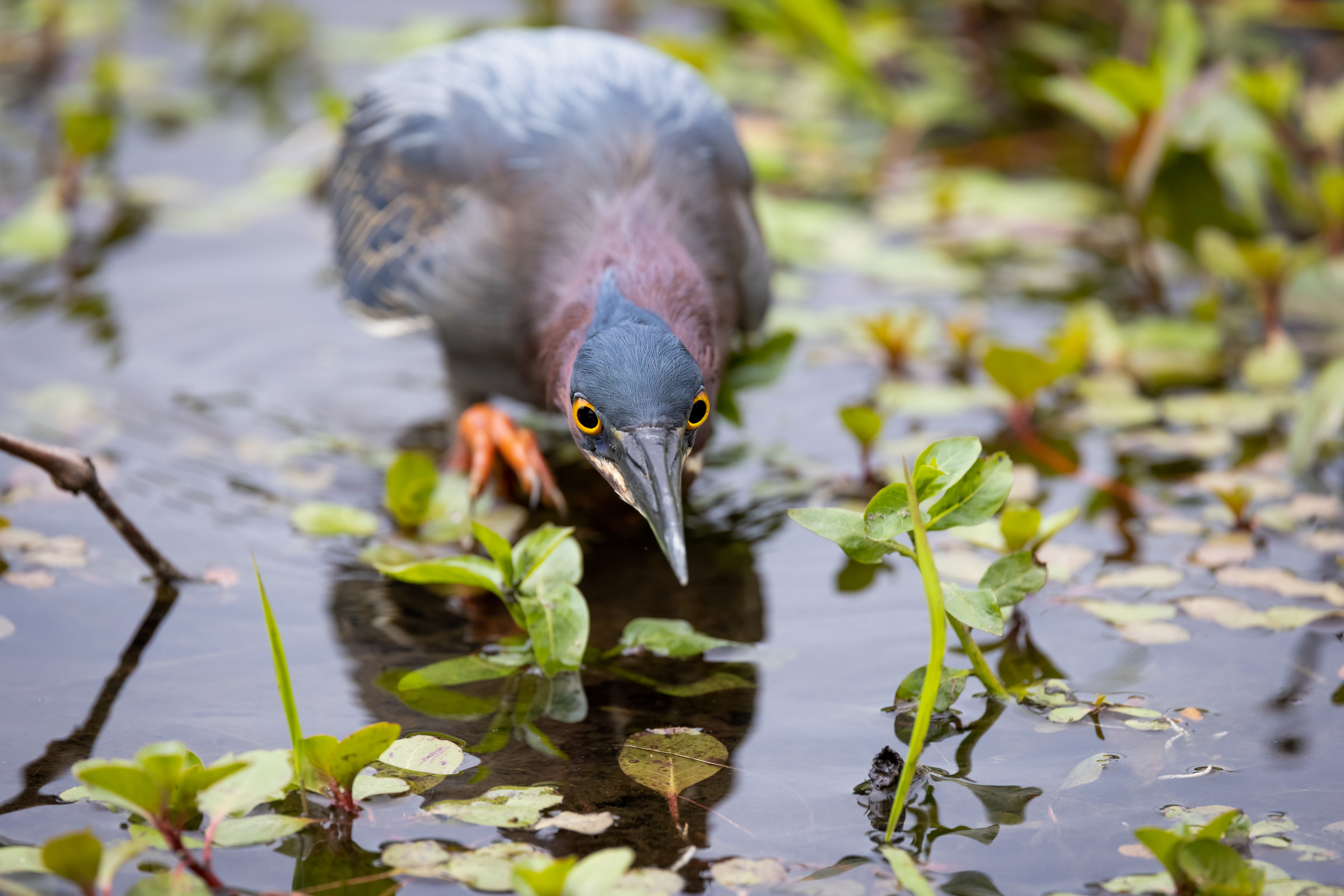


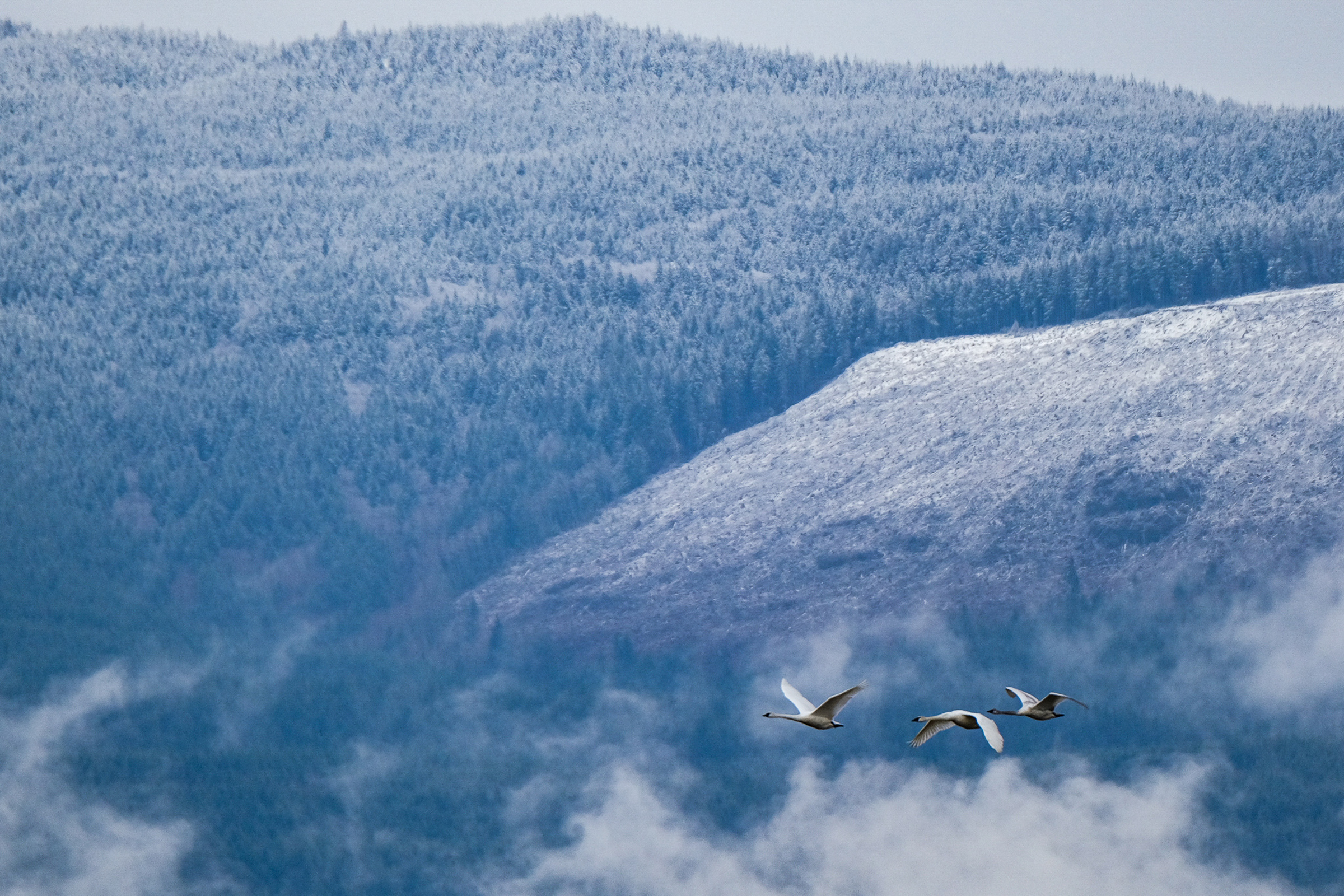
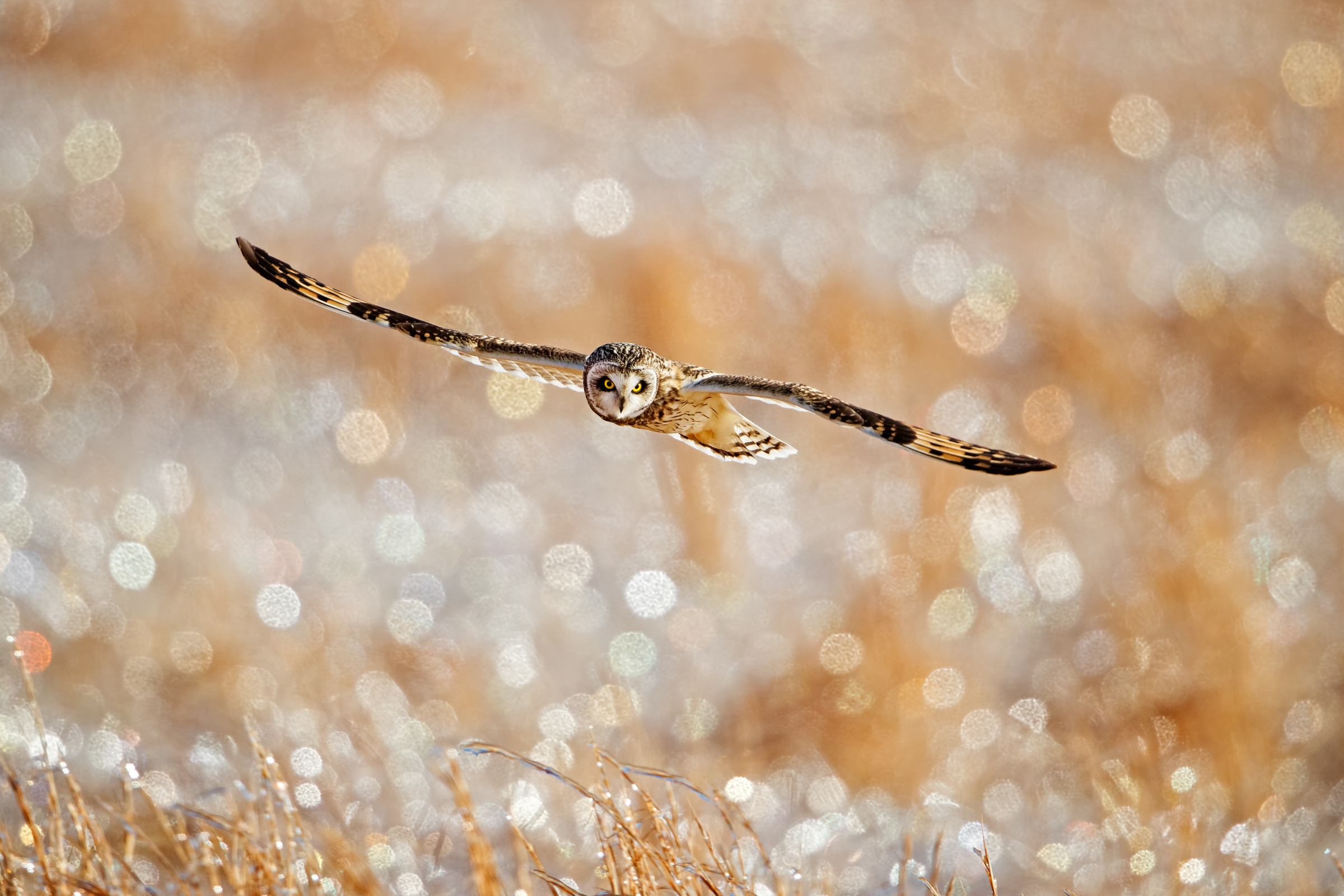
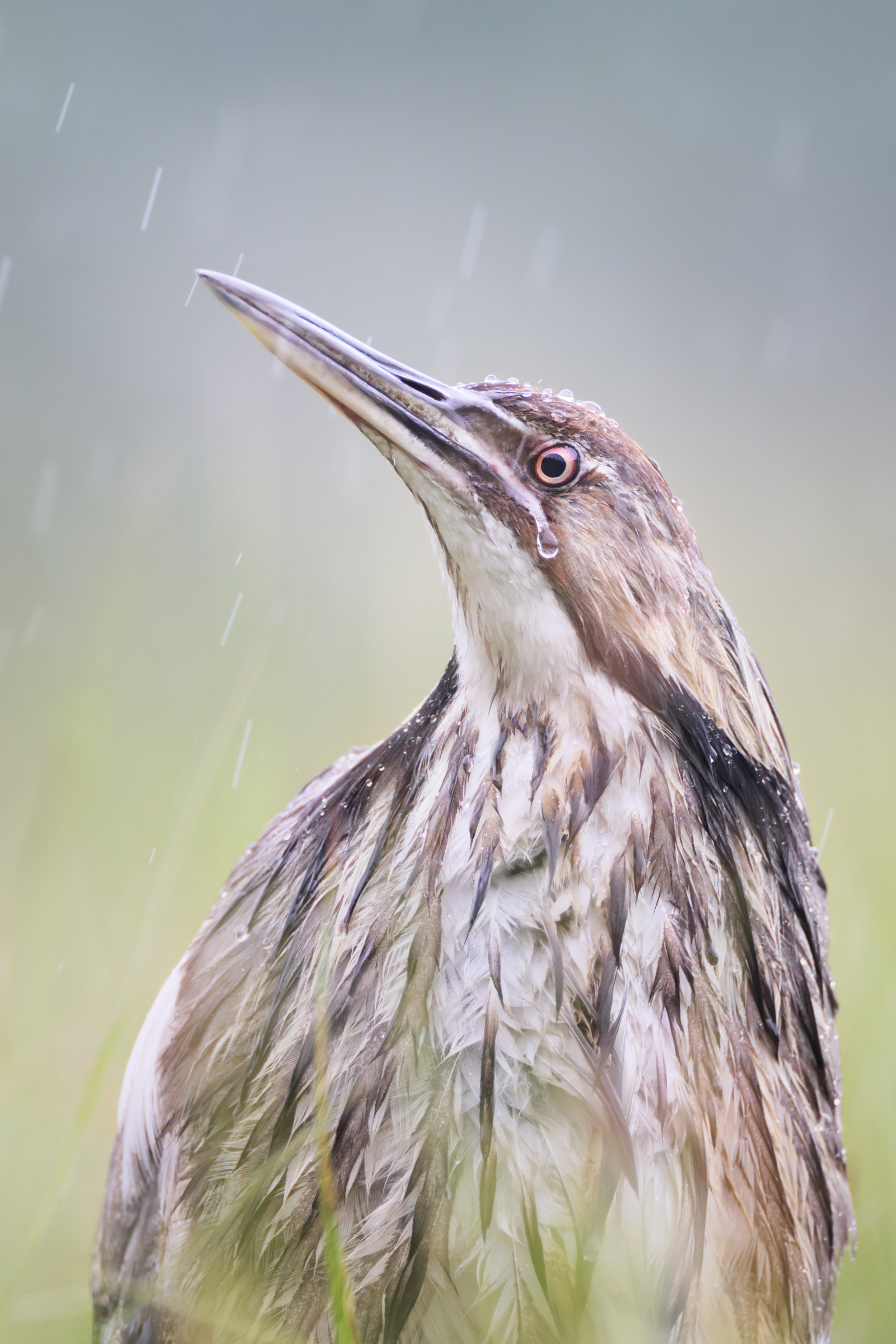

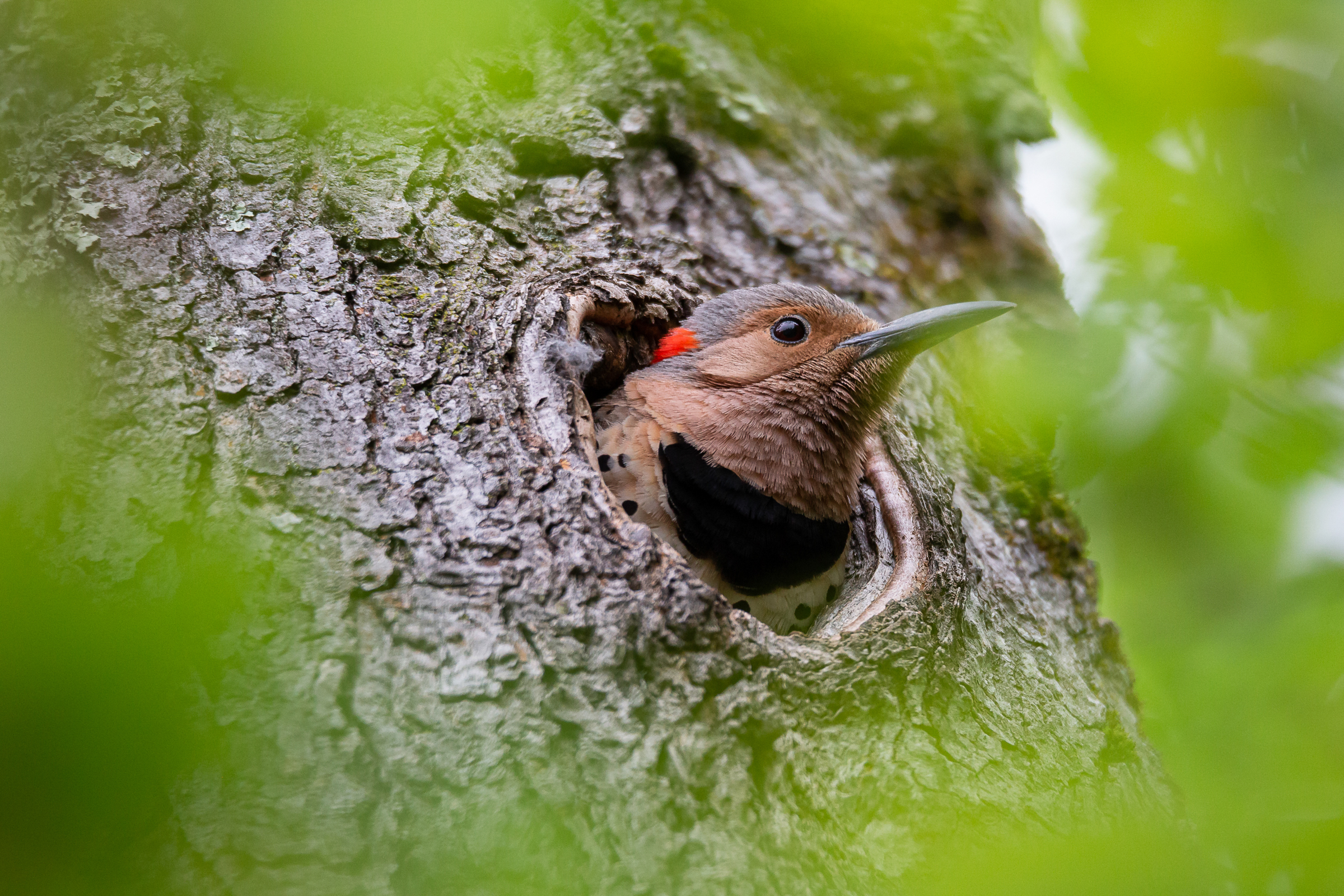
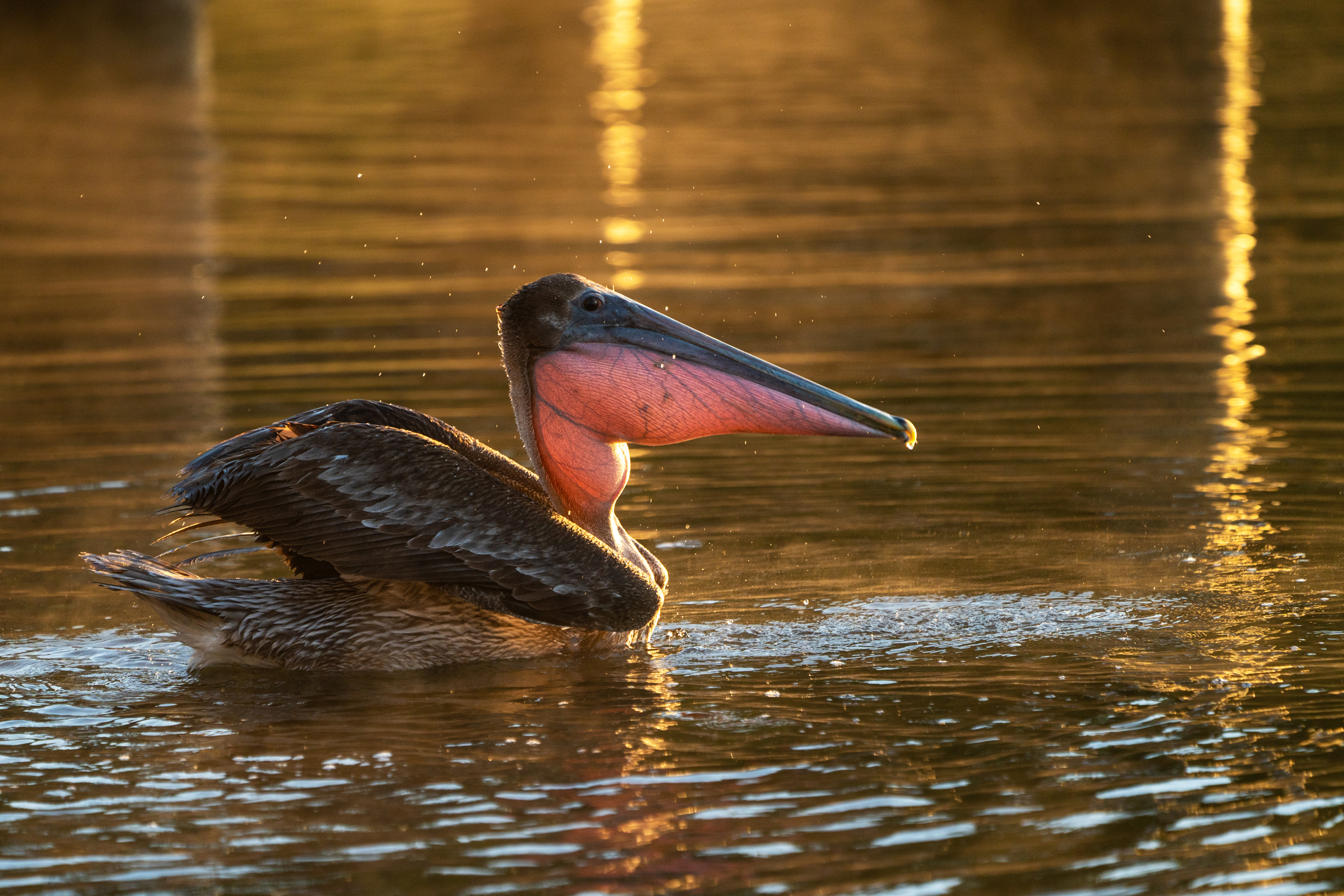

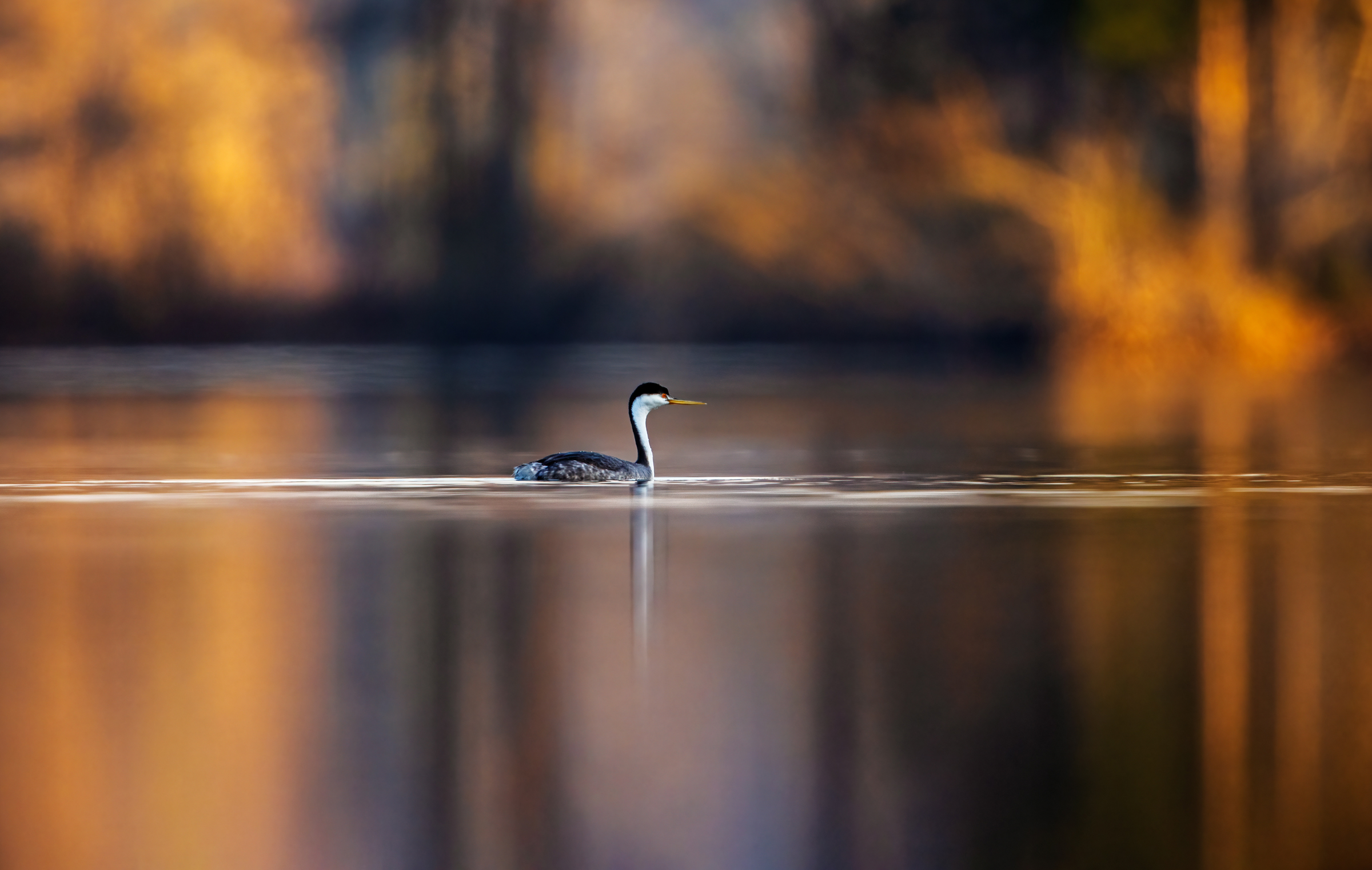

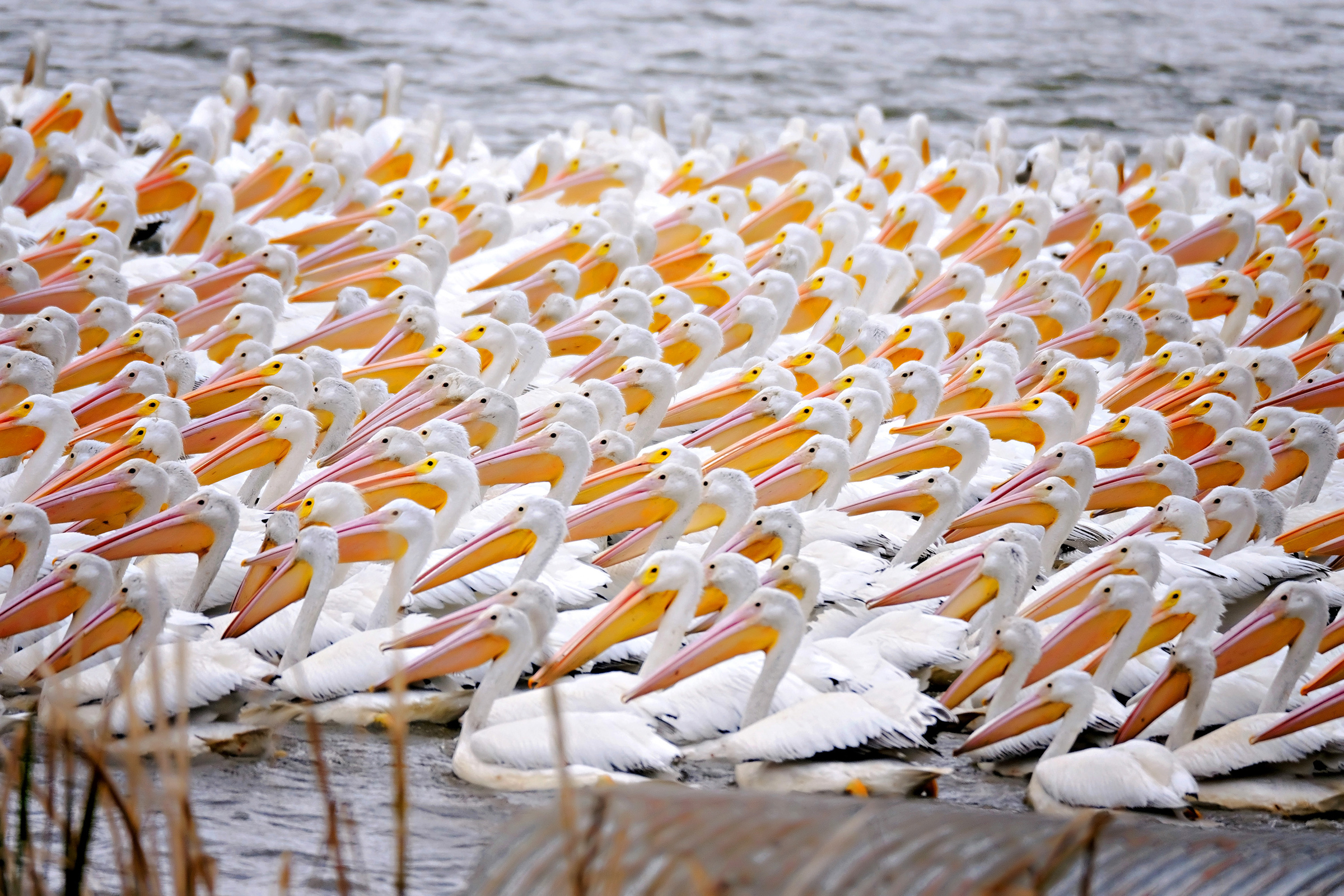
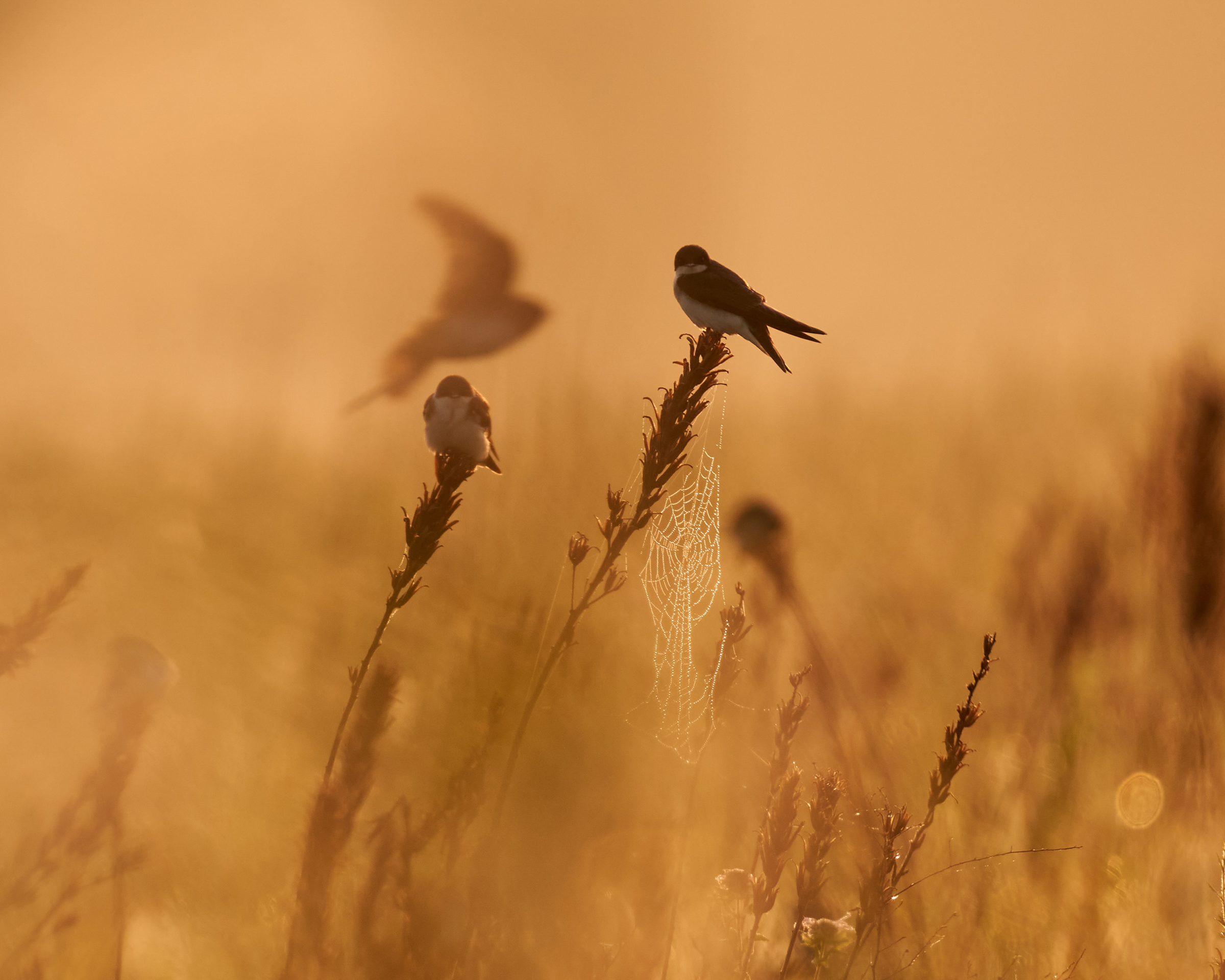
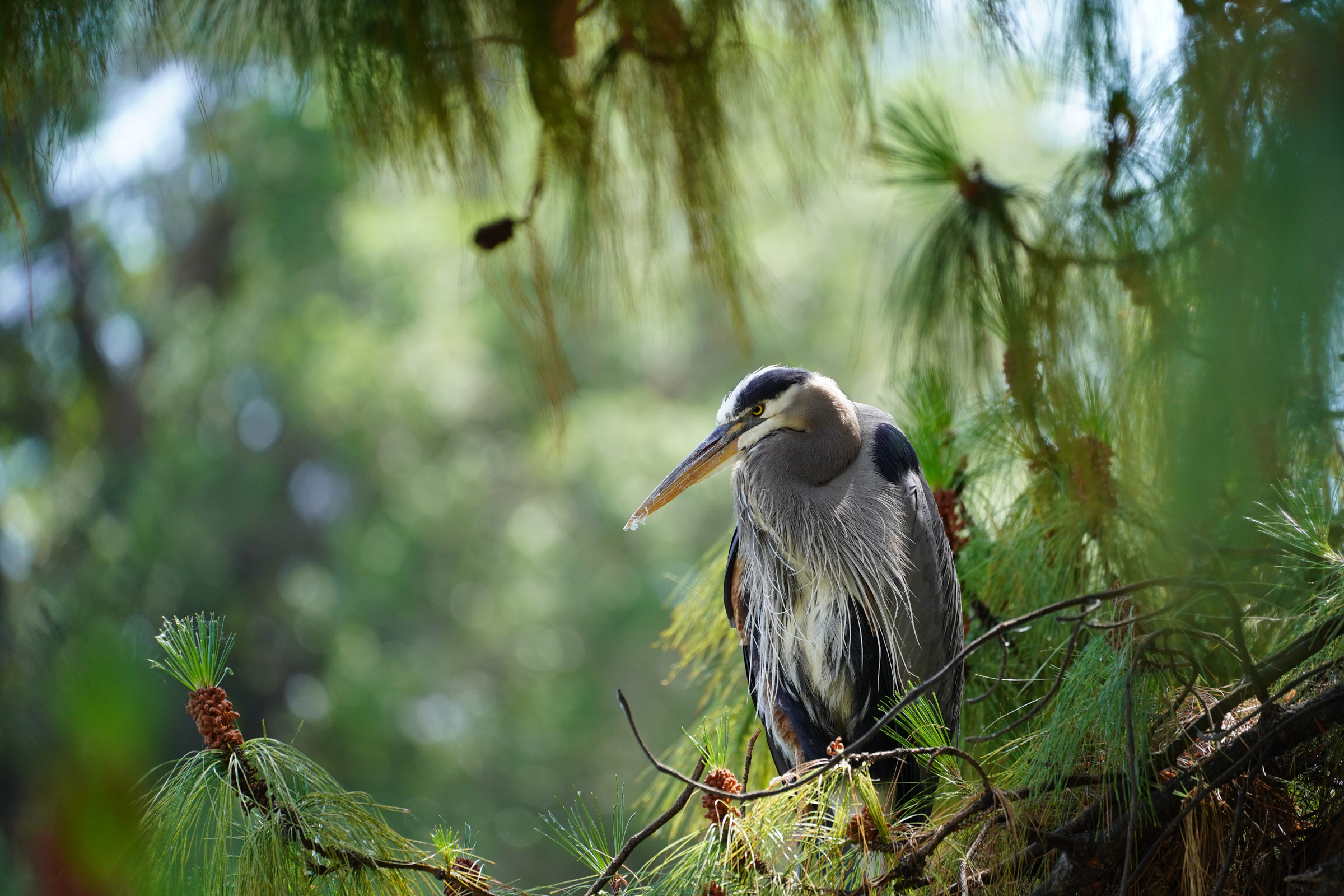





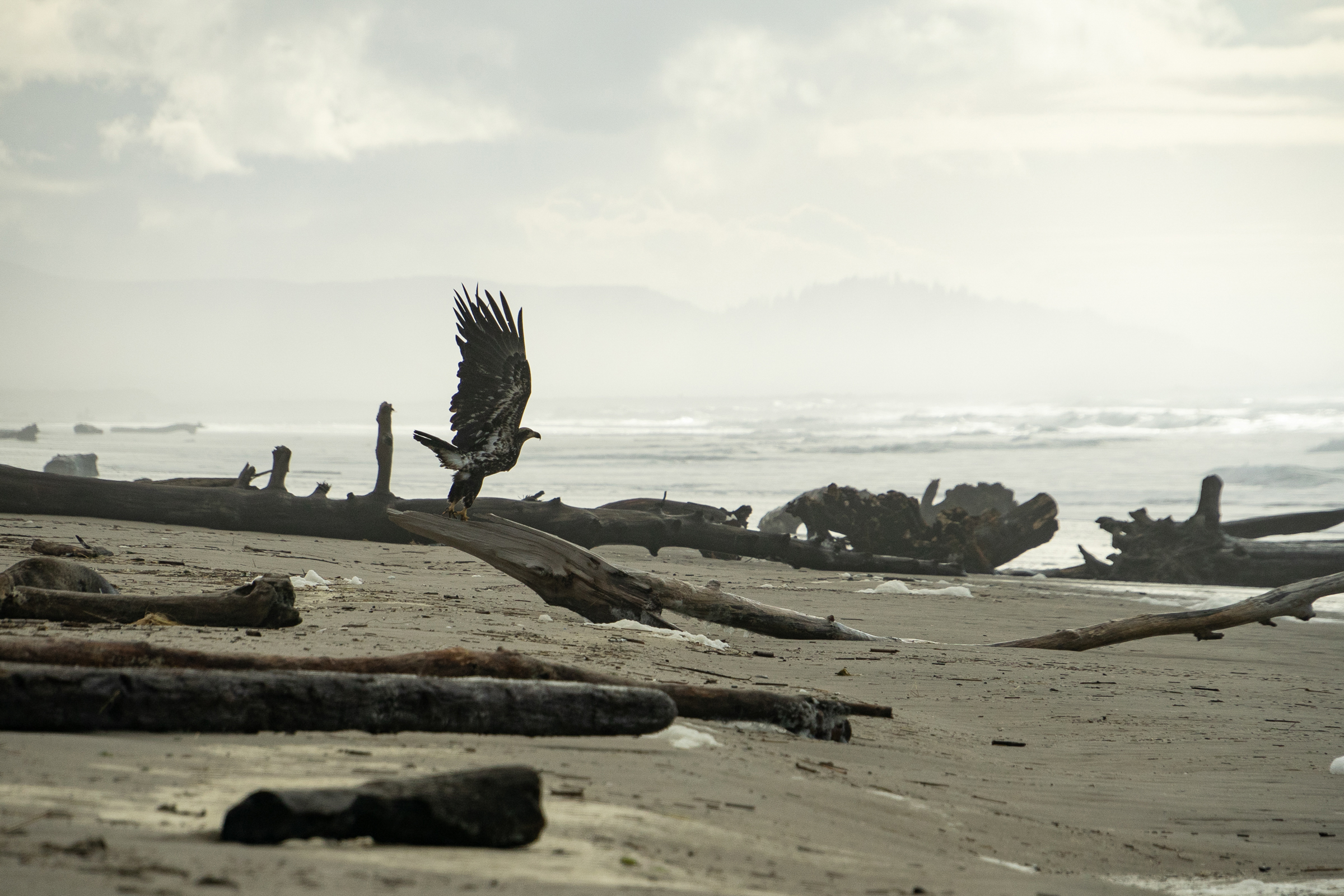
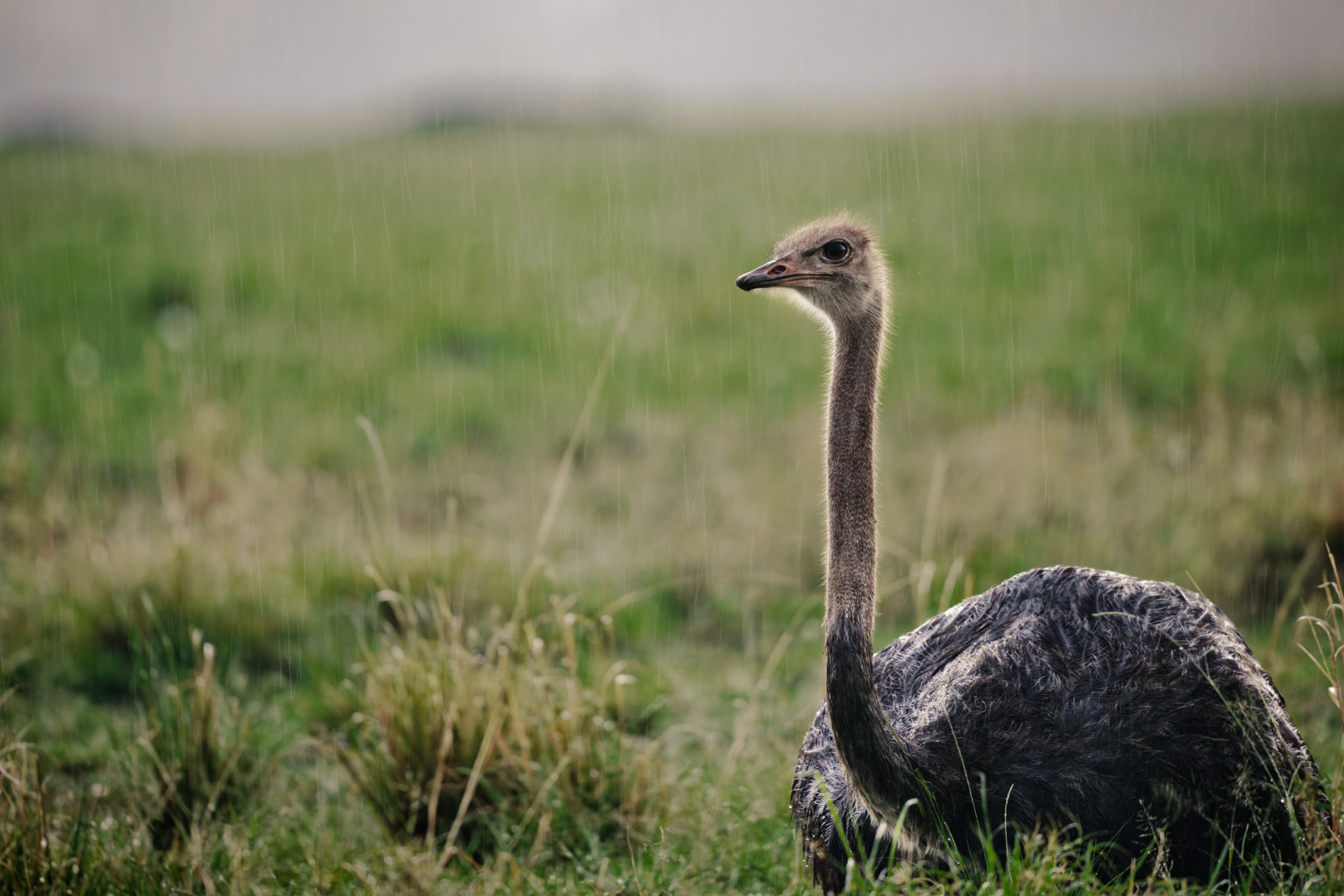
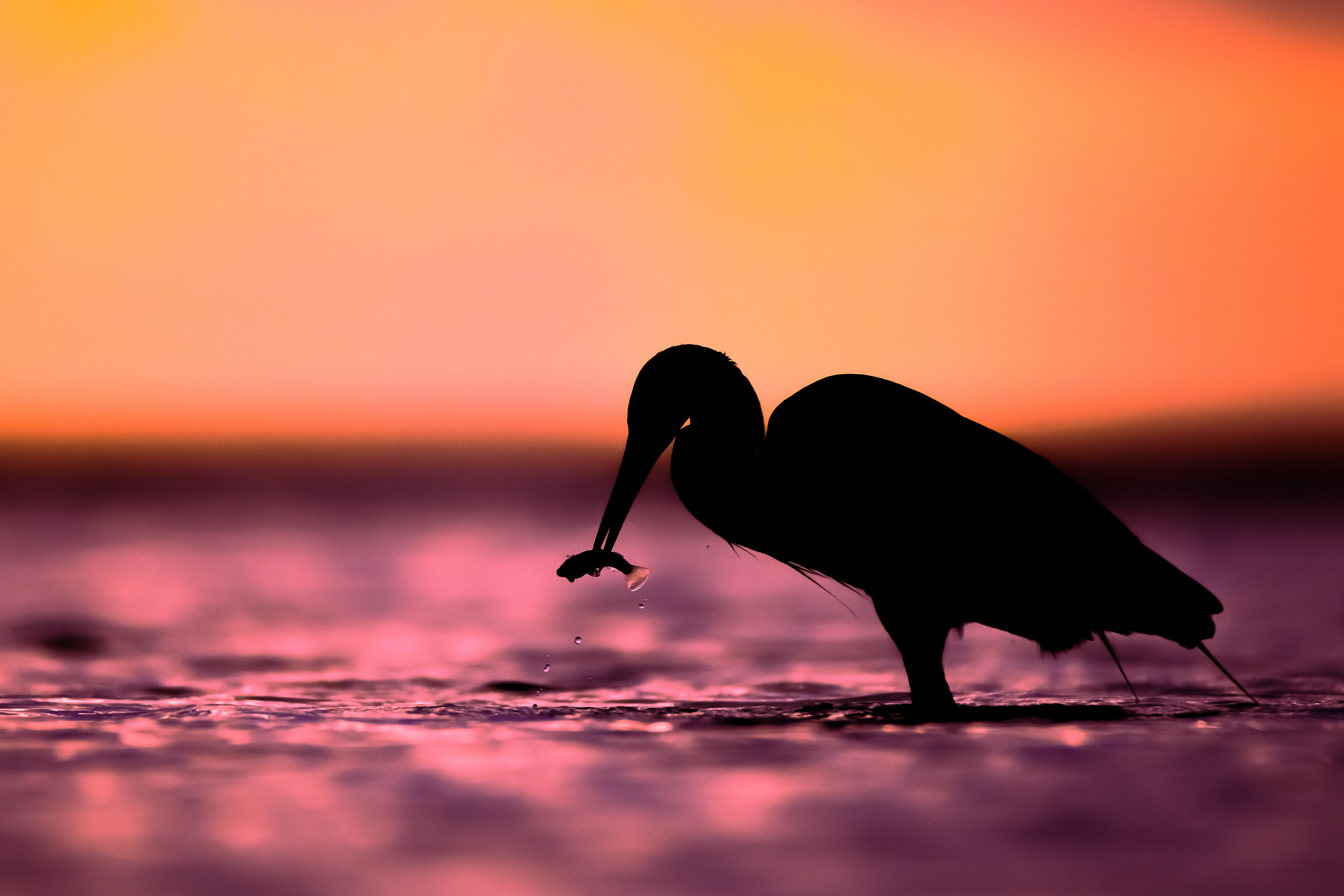

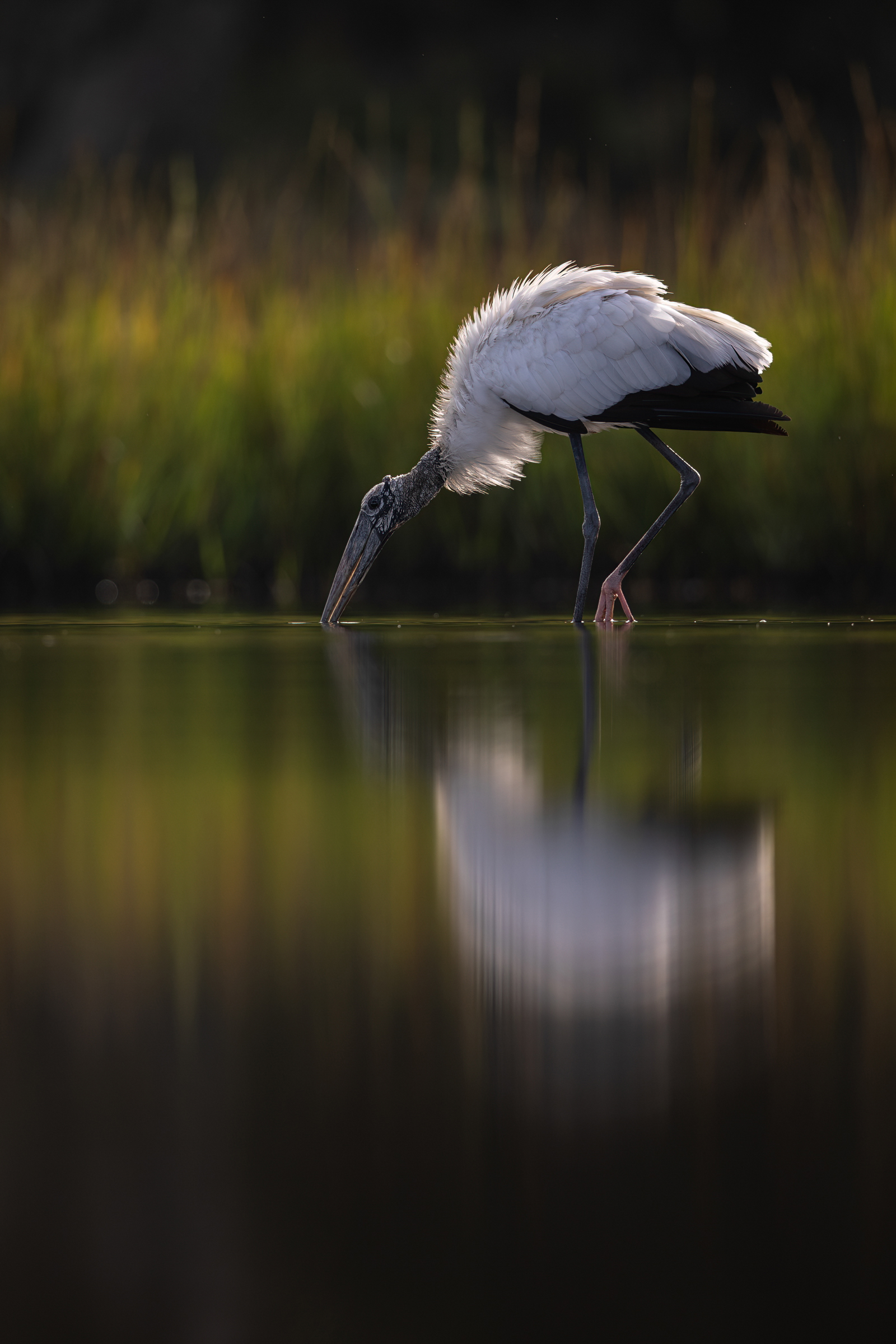

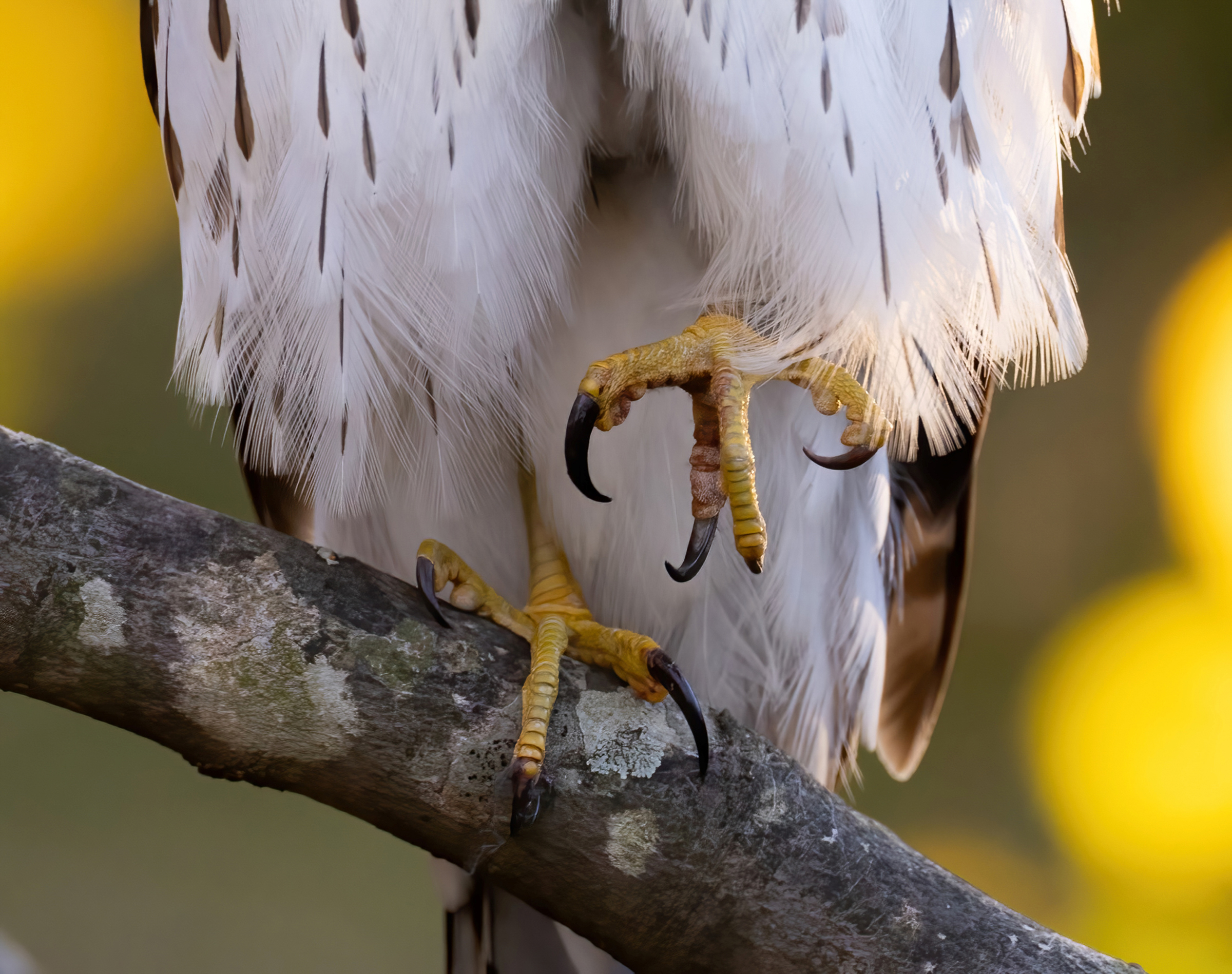
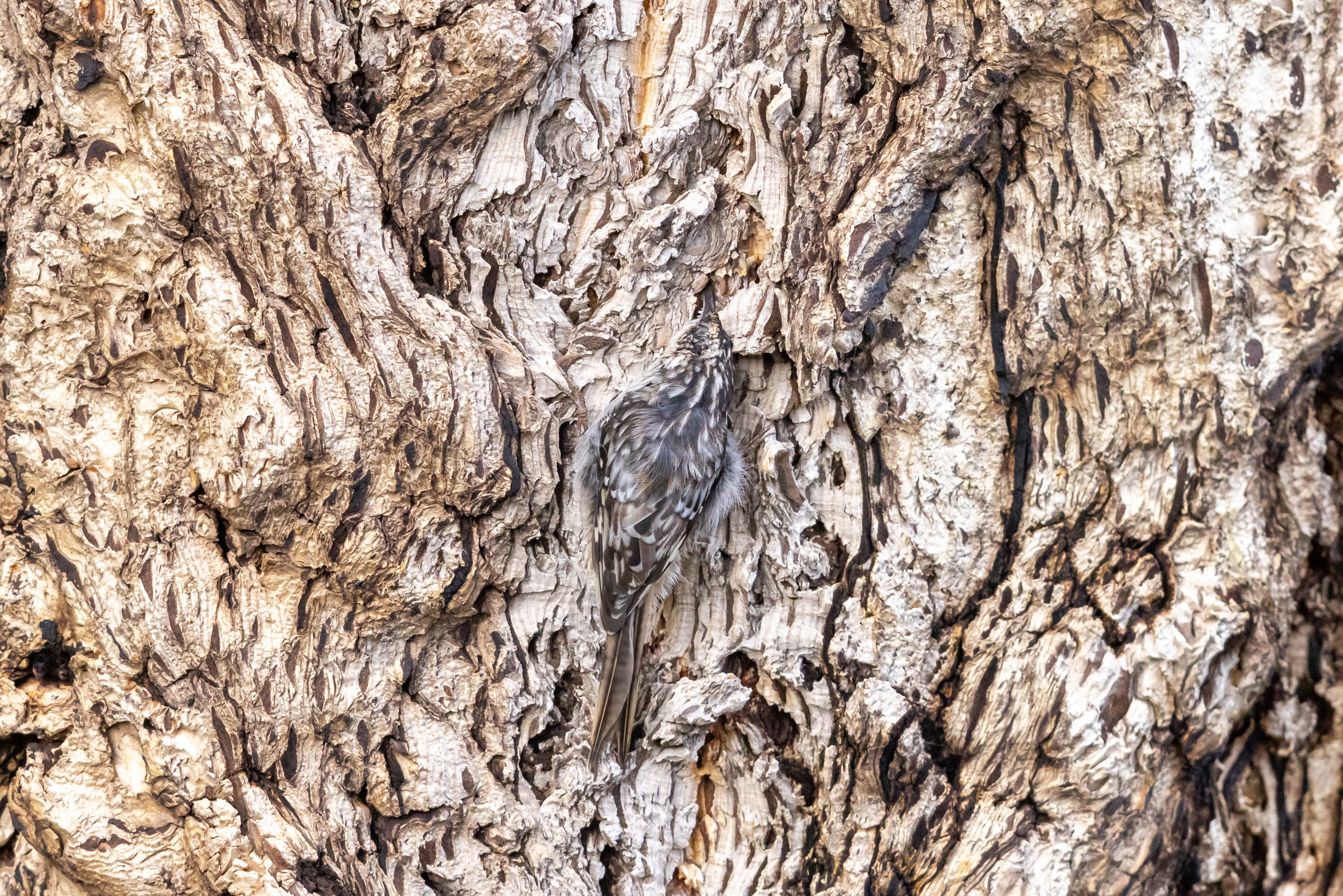


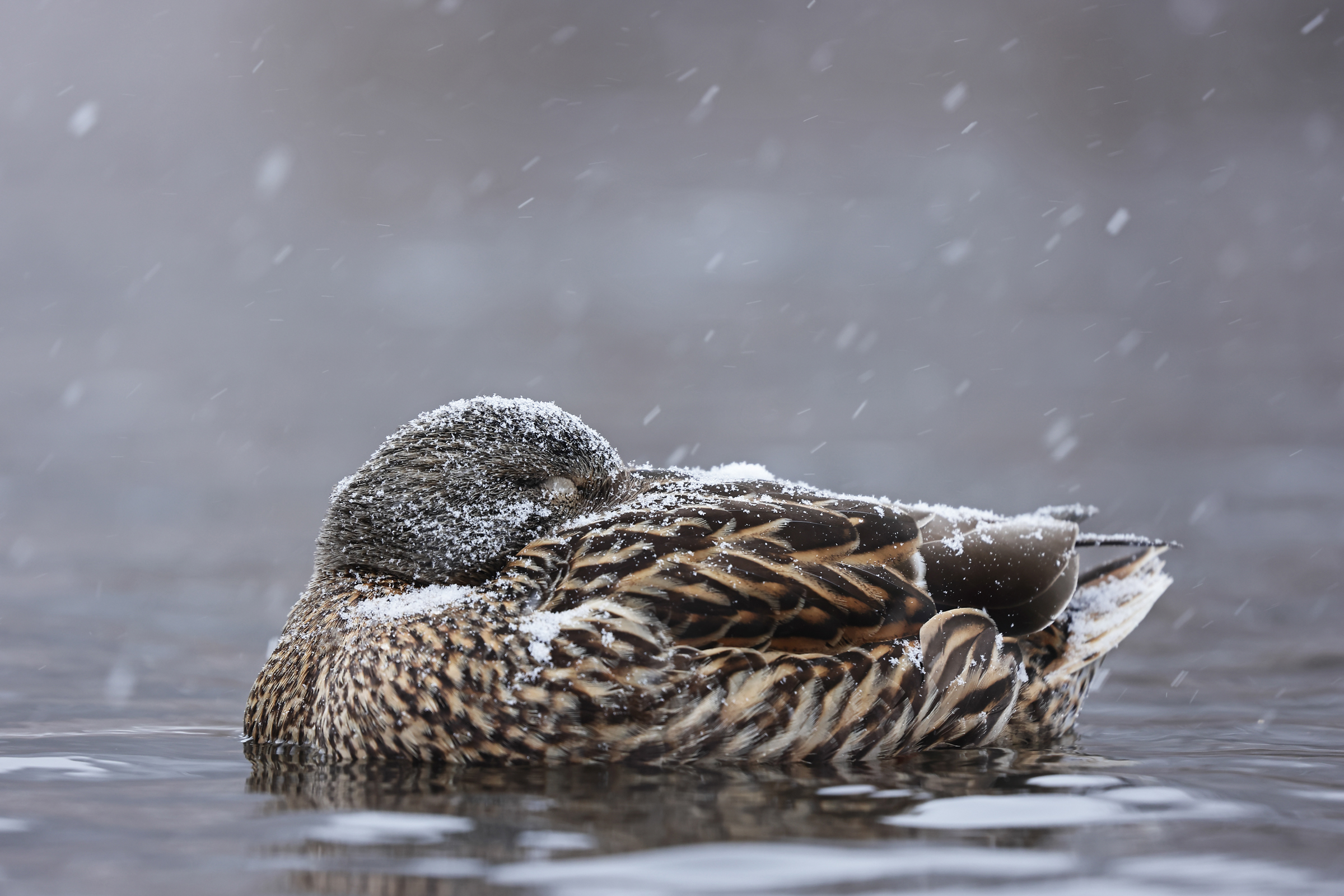
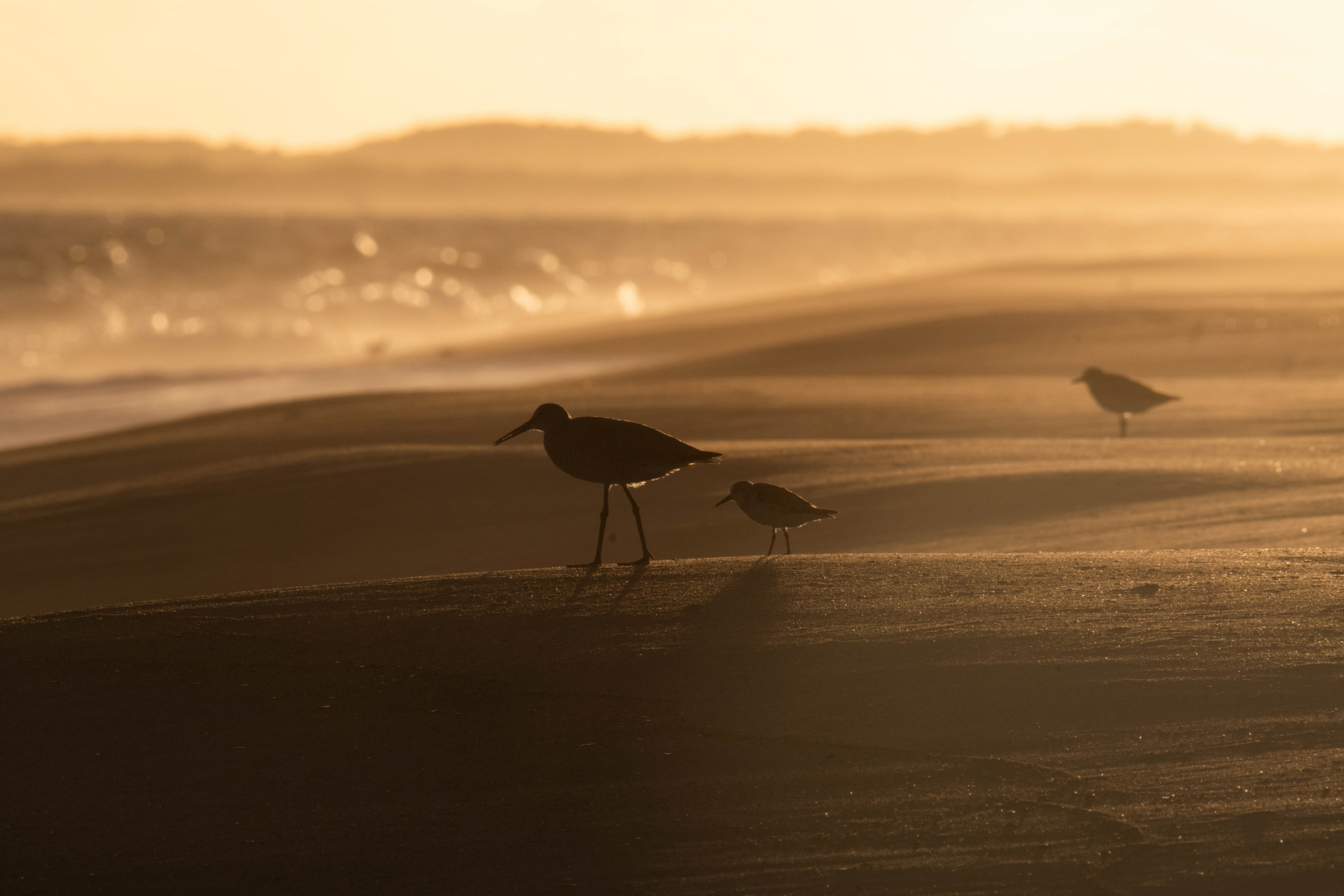
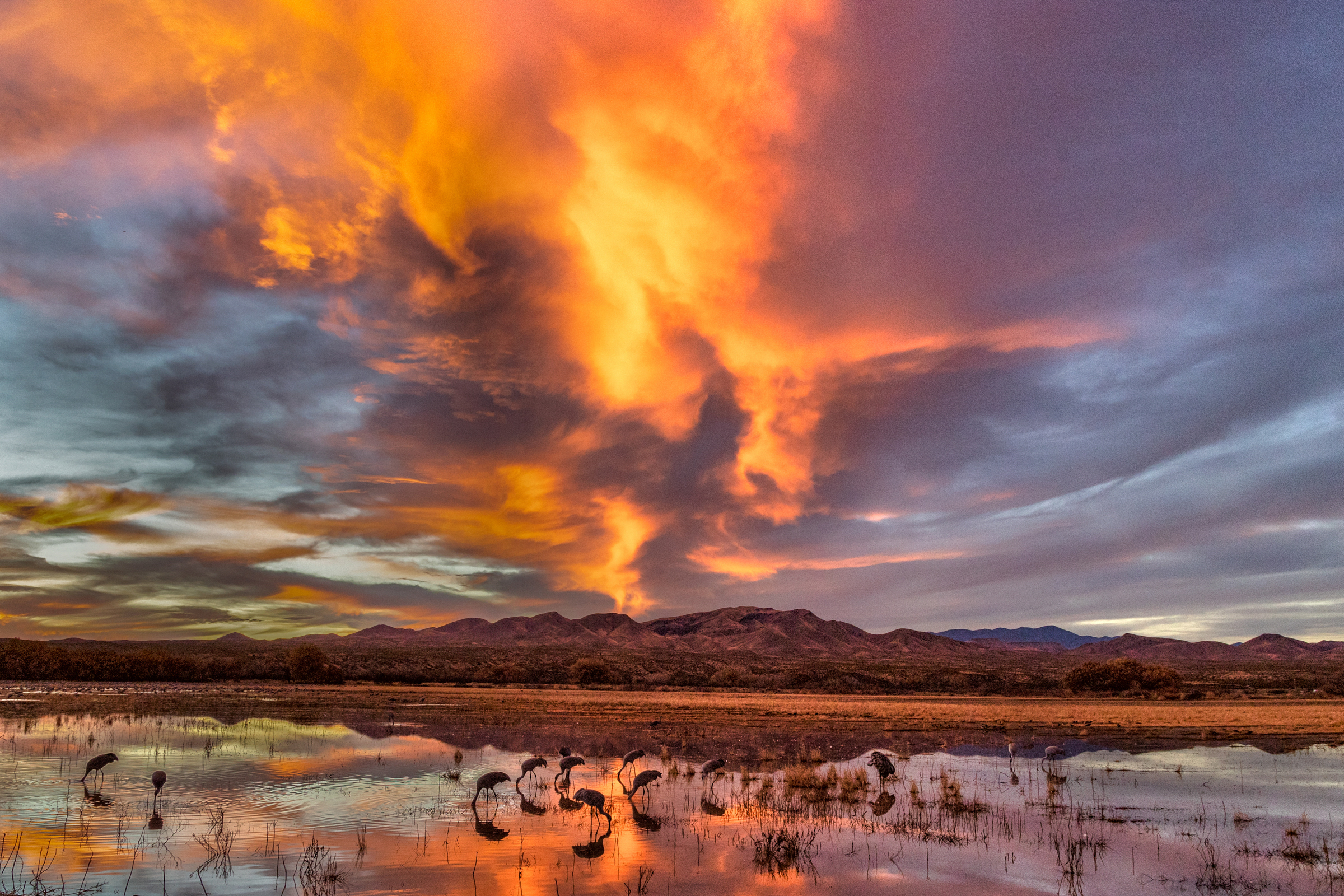

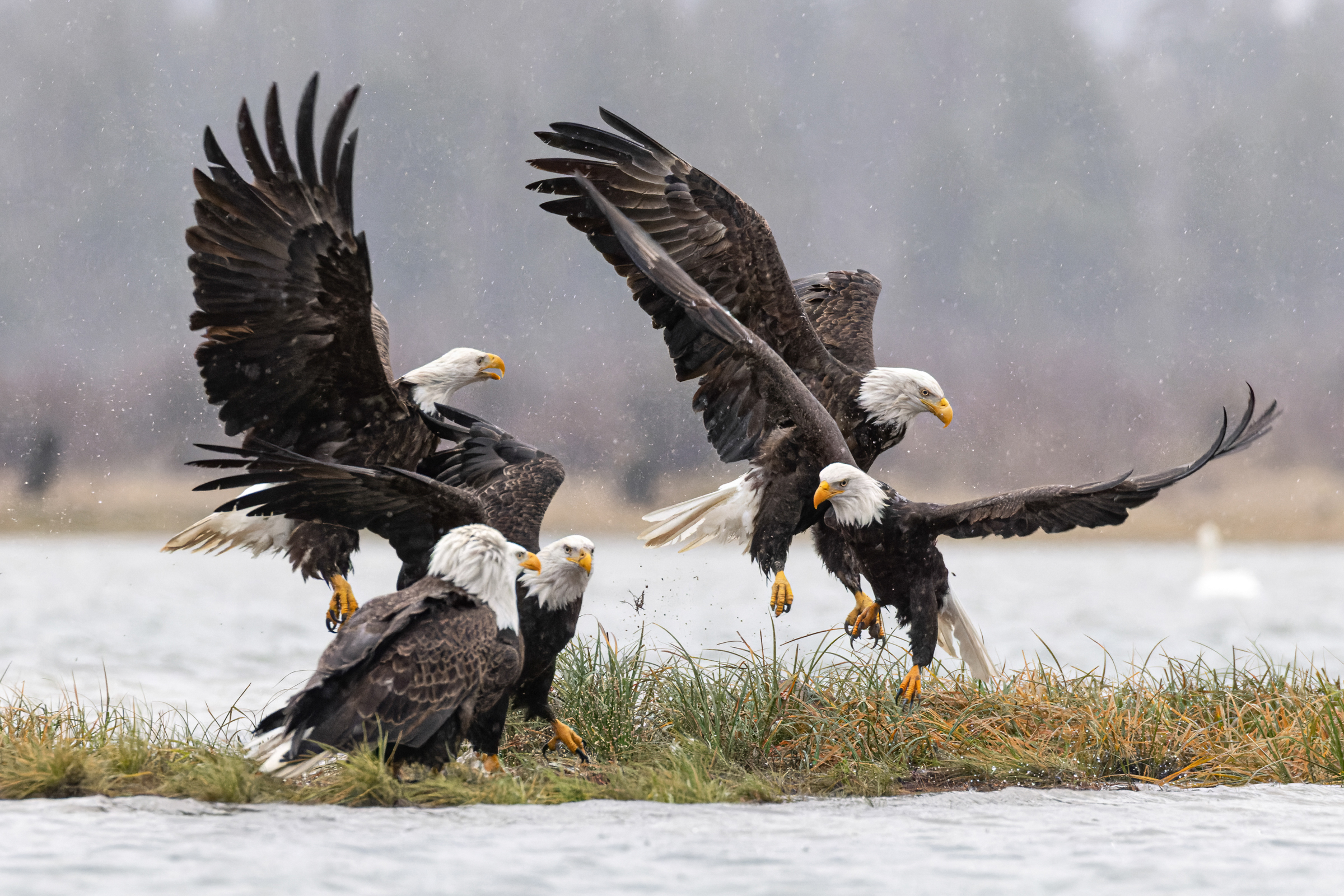
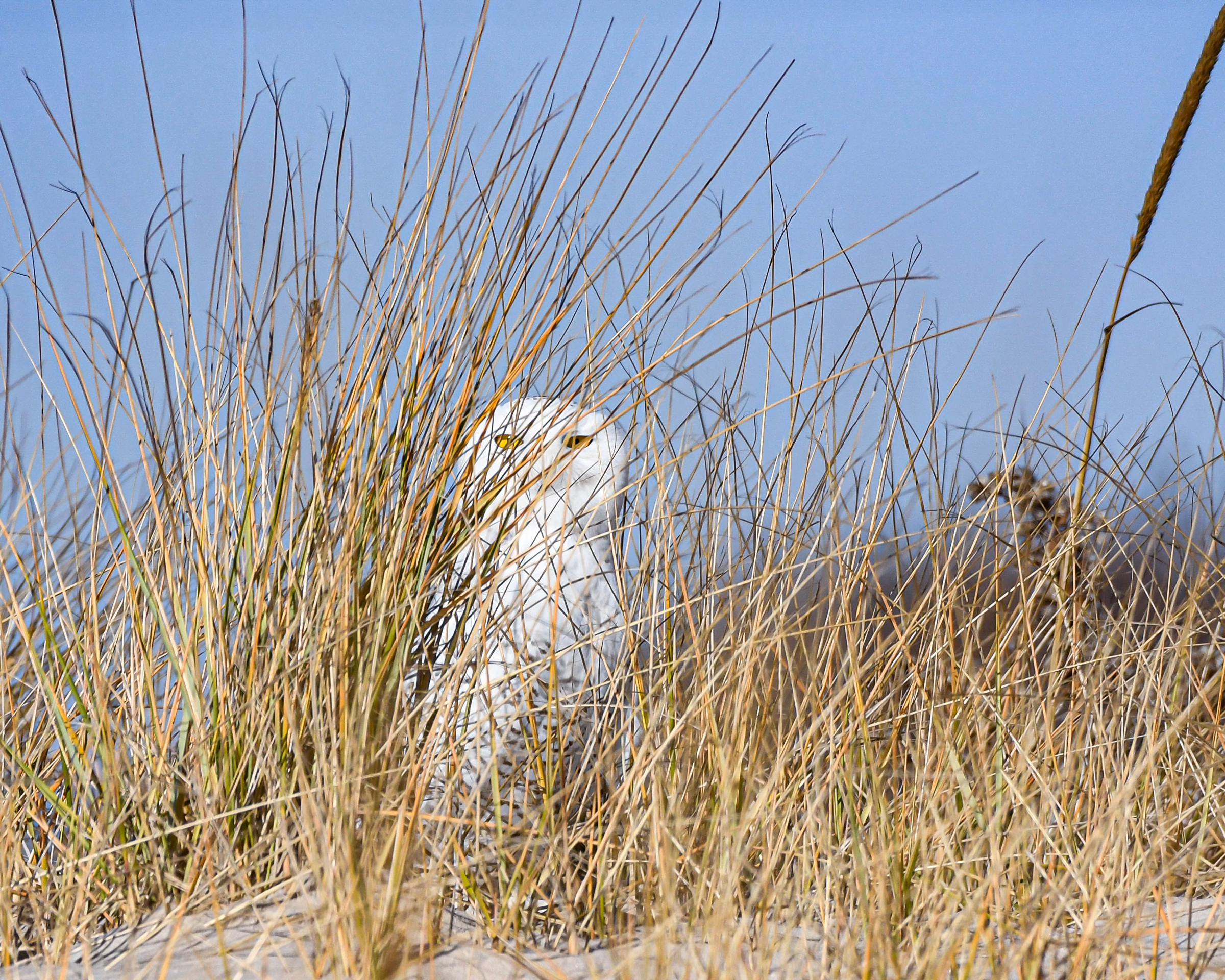

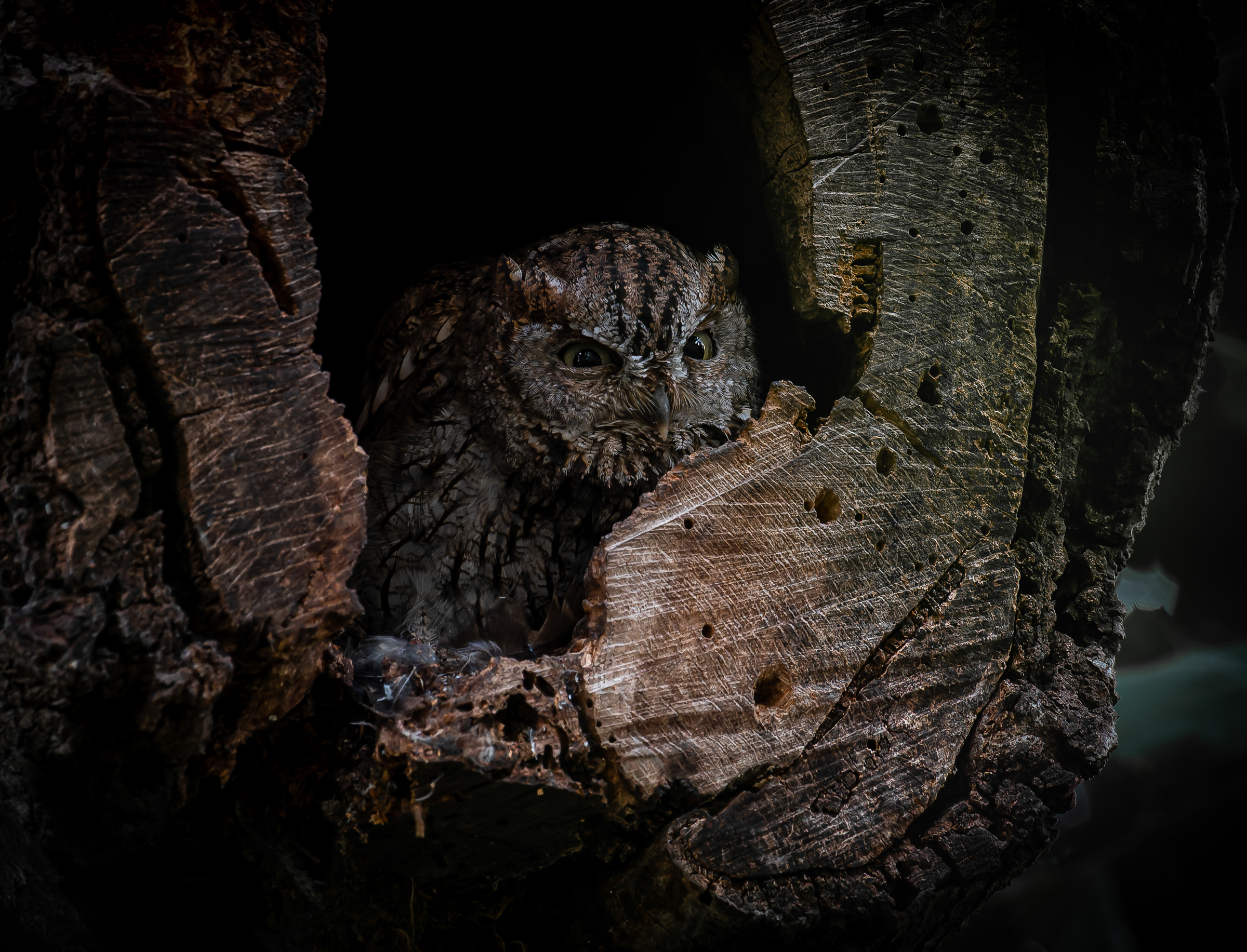
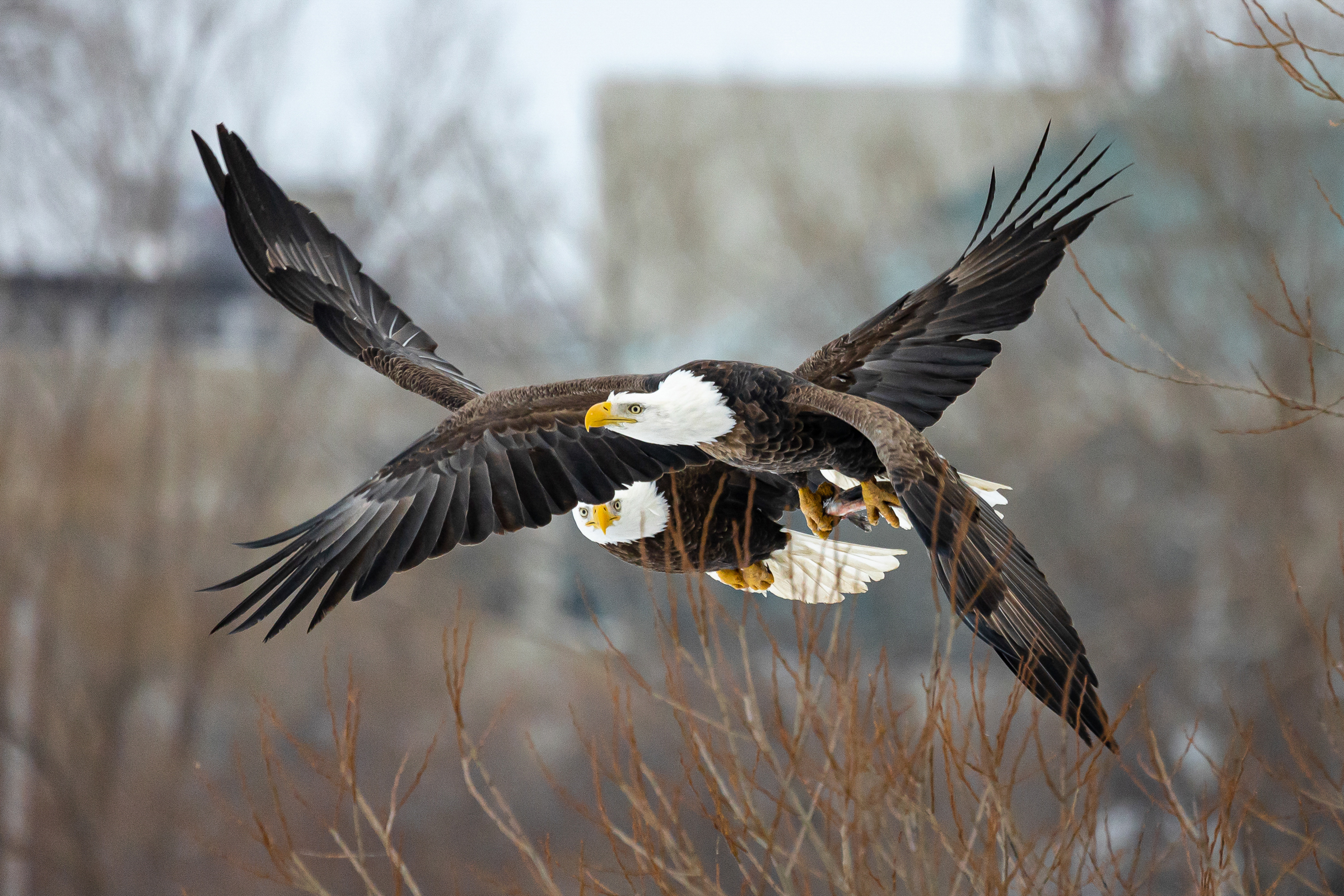
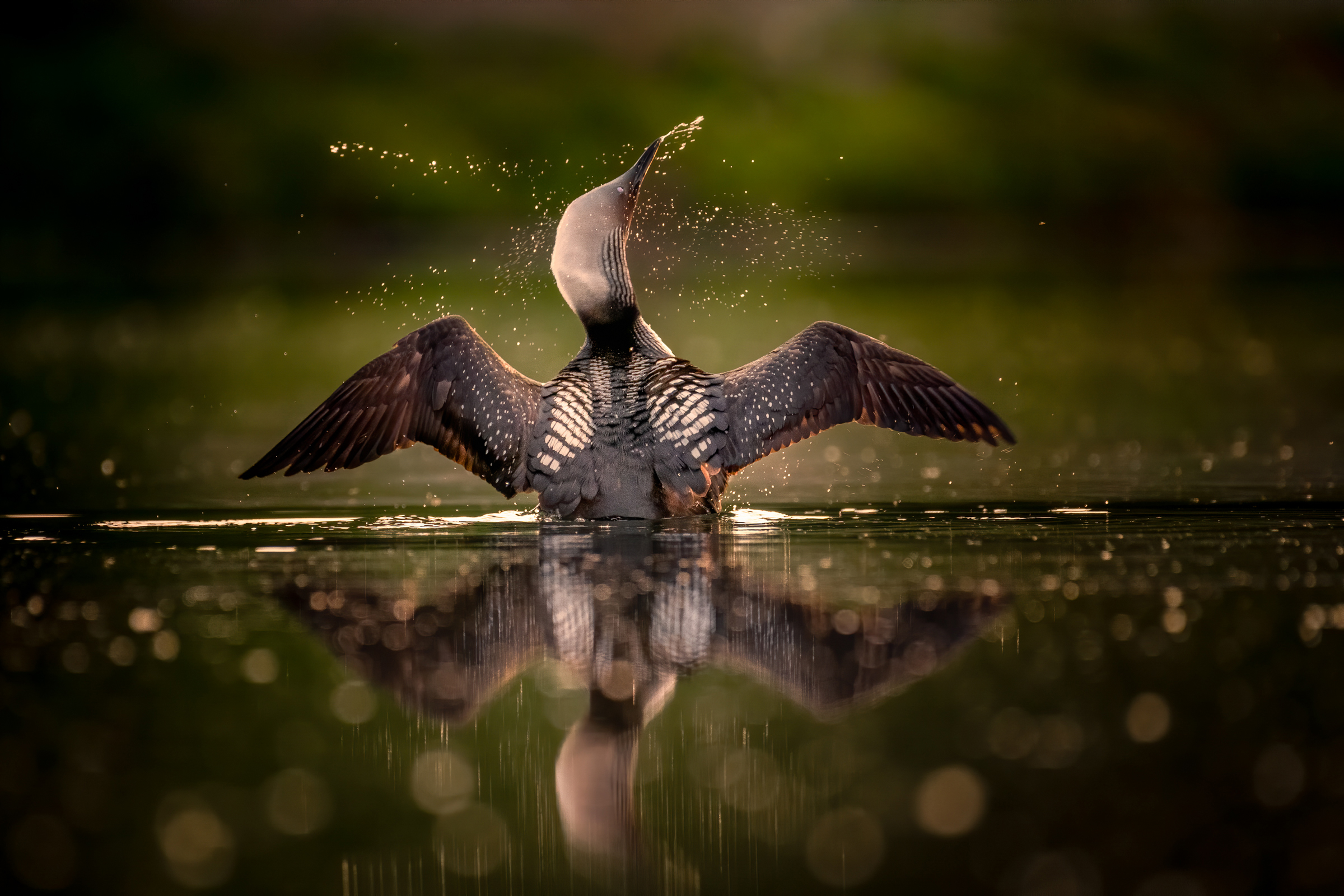

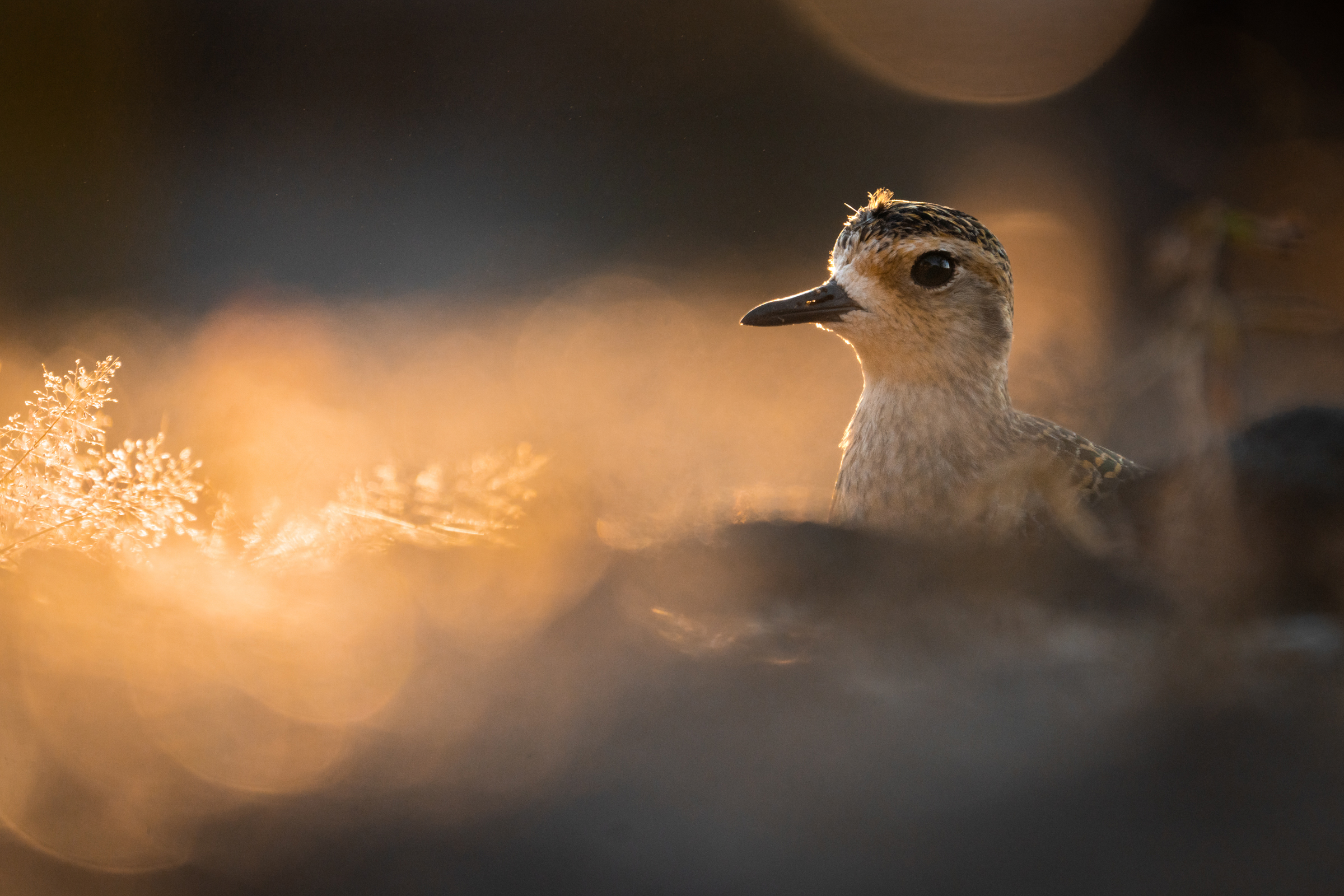
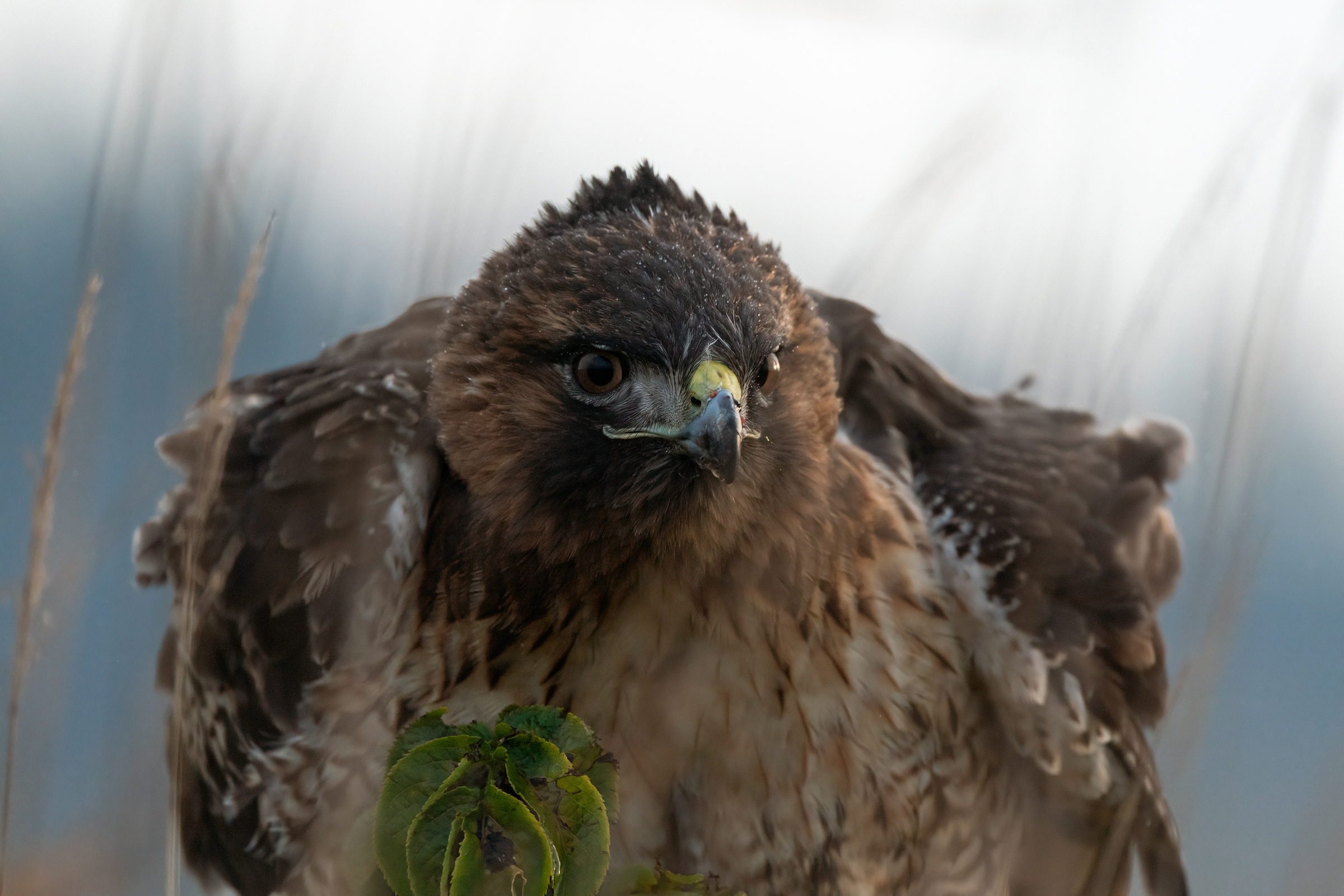
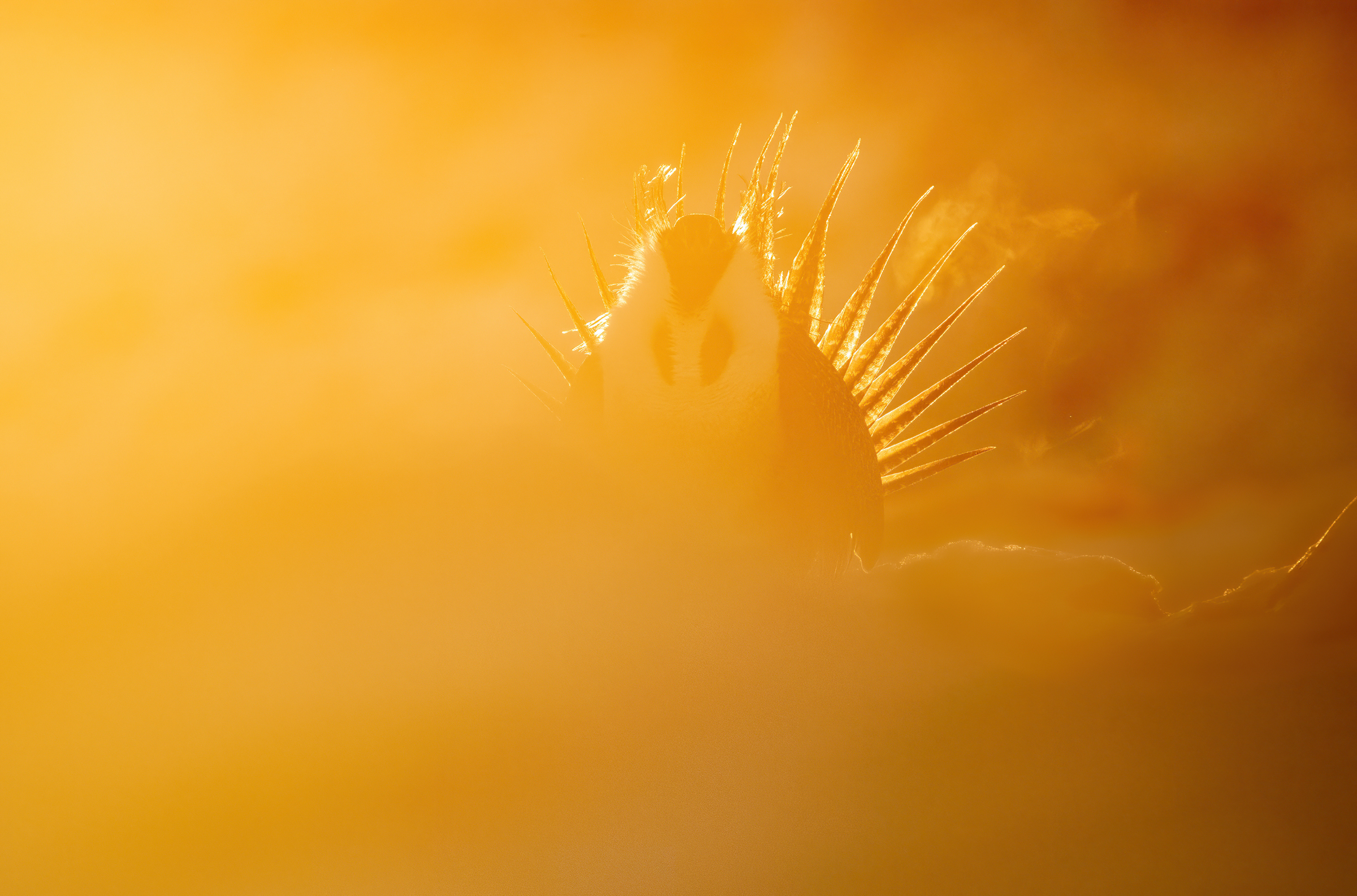
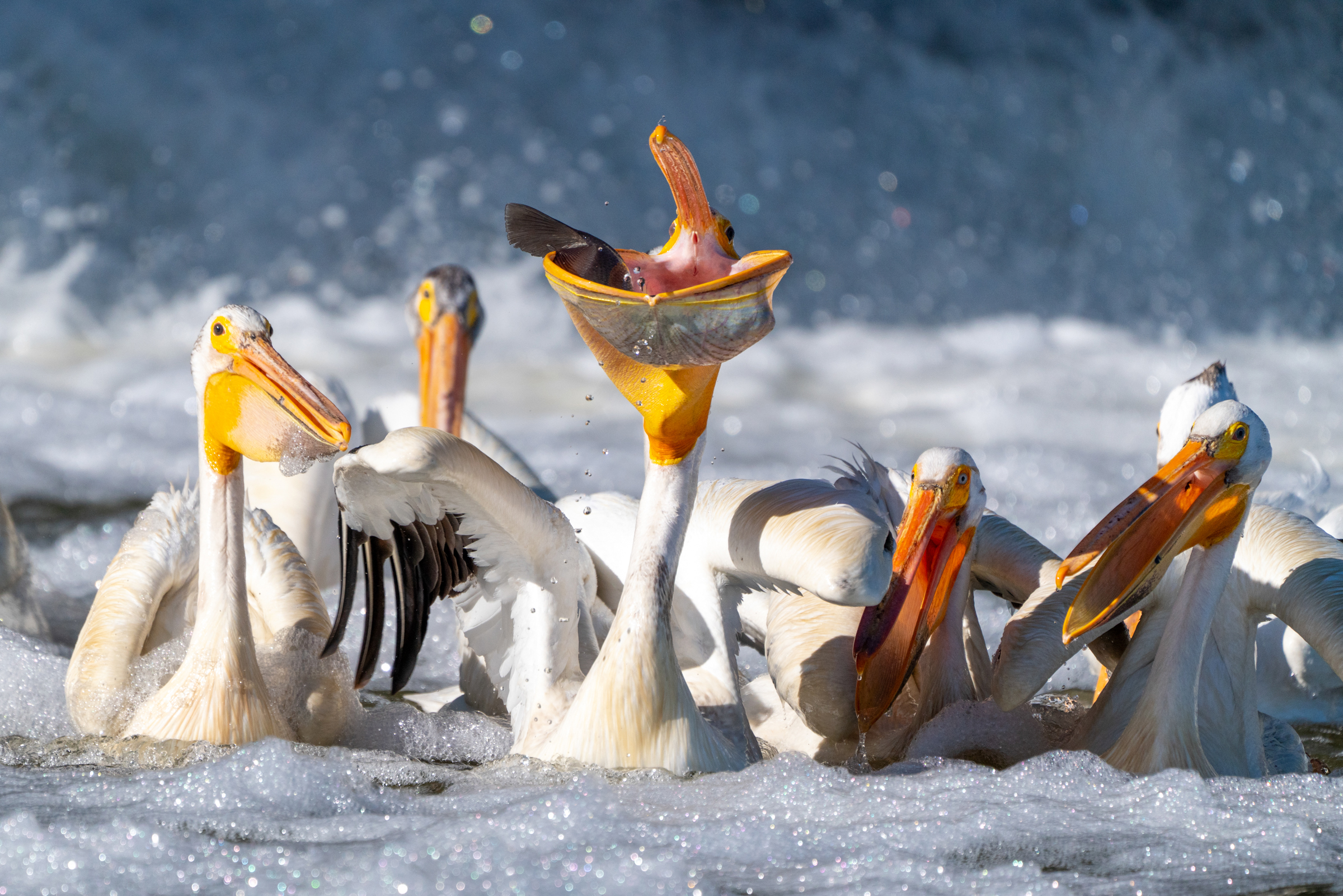





Leave a Reply